










If your joint pain keeps you from enjoying the movement of life, the teams at Sierra Vista Regional Medical Center and Twin Cities Community Hospital are here to help. We make it convenient to receive the care you need to stay active with a range of treatment options for hips, knees, back, shoulders or other joint conditions.
comprehensive services include:

"This is supposed to be the happiest time of my life, but I don't feel happy. I don't feel anything, really. And it makes me feel so guilty. There is no reason to be sad. No reason not to be happy. And I just can't shake it."
No one chooses to suffer from perinatal mood and anxiety disorders (PMAD) like postpartum depression and anxiety Even with an easy pregnancy or birth, feelings of sadness, hopelessness, anxiety, and depression can develop. But local help is available.

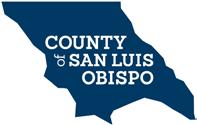








BrainHearingTM technology.
Introducing Oticon Own™ , a hearing aid developed for ultimate discreetness and superior sound quality. As the world’s smallest hearing aid with BrainHearing technology, Oticon Own allows you to process sounds with less effort, so you can hear more naturally.

team of qualified hearing care professionals has the knowledge and technology to help you live your life with total confidence.
Do you want to hear your best, look your best and feel your best? Peter Lucier, the Hearing Aid Specialists can help you today.
Say goodbye to the Big Box store and say hello to a hearing solution customized for your lifestyle. You and your family will be pleasantly surprised.
Simple, Elegant, Handsfree
Your custom Hearing Improvement
starts at $2900. Same day
available.
our friendly care coordinator
she is ready to help you
hearing your best. You
it!
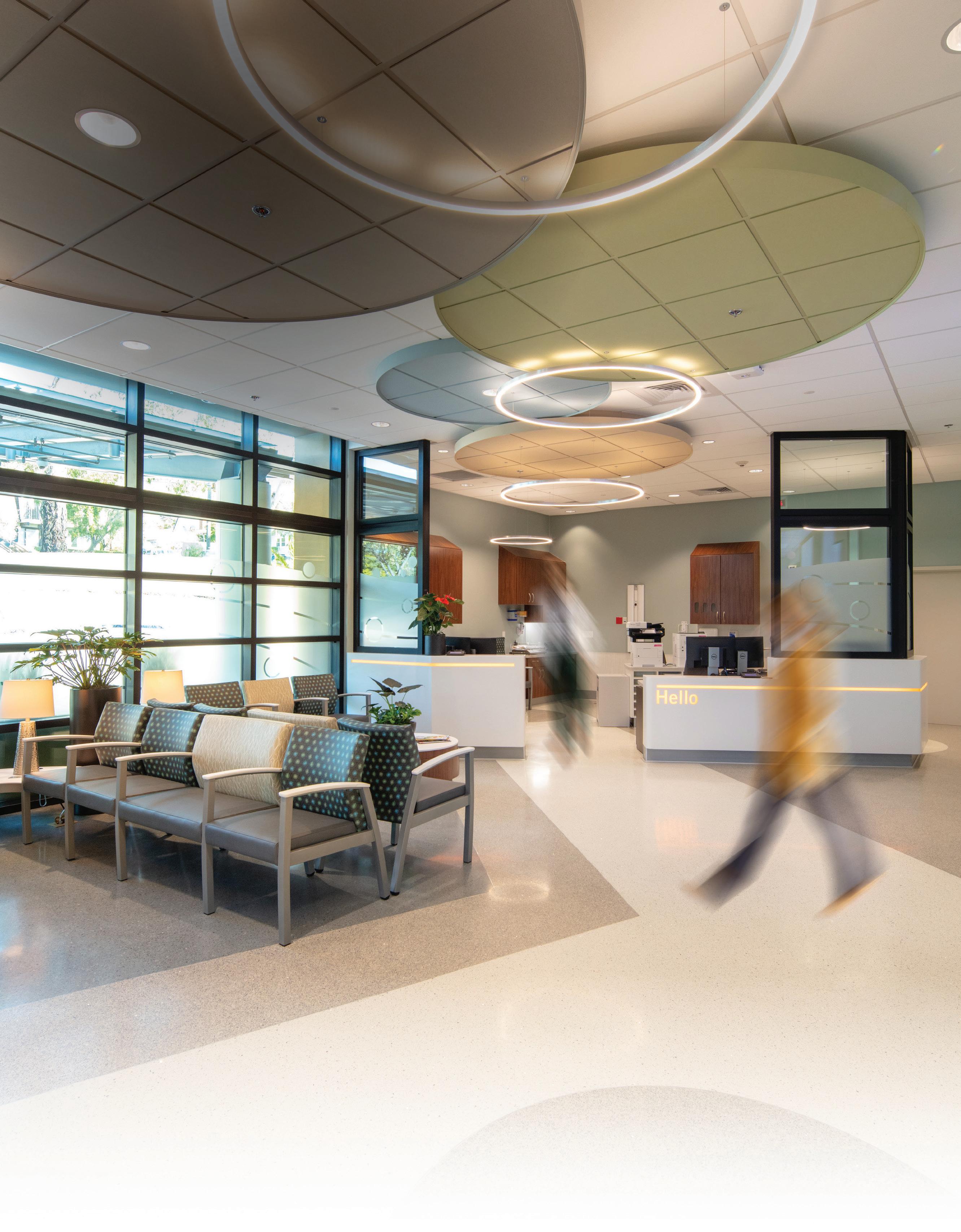









It’s time for a selfie break on Monterey Street next to Lululemon and Mission San Luis Obispo de Tolosa. With Fresh faces and a new breed of hopes and dreams, Cal Poly and Cuesta College students return to San Luis Obispo.







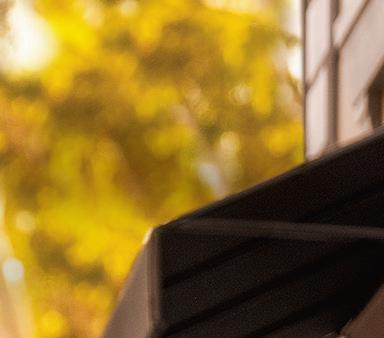
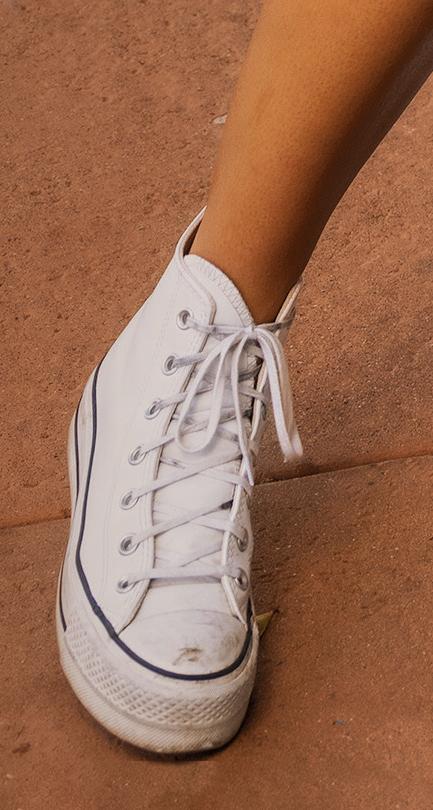





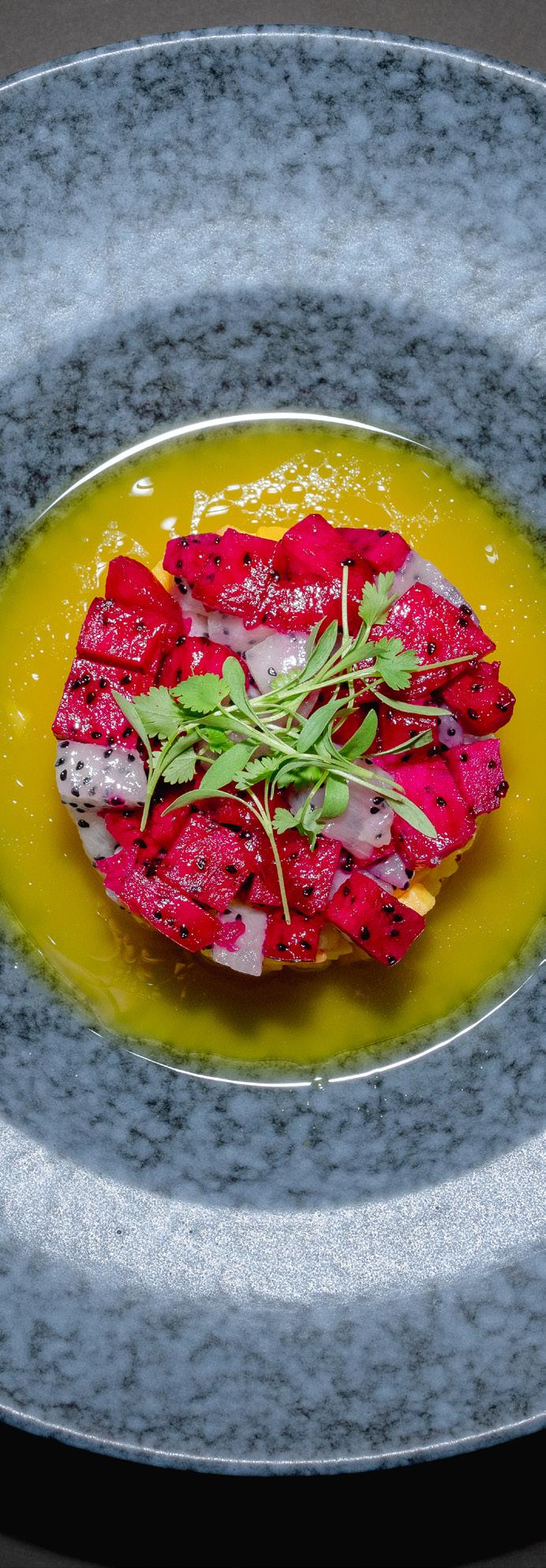

At our old house, just off Foothill Boulevard, I fabricated a little pizza-slice-shaped home office in one section of the garage with a door leading to the backyard. And I had a frequent visitor.
After his big brother and big sister walked down the street to their respective classrooms at Bishop’s Peak Elementary, Harrison took up his usual corner of my office impatiently shifting his gaze between the football he was tossing up and down to himself and me, as I talked on the phone. Then, invariably, he would turn to the whiteboard and scrawl some of the first words he learned as a pre-kindergartener: “Will you play catch with me, Dad?”
I would mouth “in a minute” as I covered the receiver on my phone and he would put one hand on his hip, tilt his head, and open his eyes wide—a move I swear he learned by watching his mother—before pointing back to the whiteboard. It always made me laugh as we continued our silent negotiations as if we were a couple of mimes battling it out for tips at Fisherman’s Wharf. As the telephone conversation droned on, I would summon Harrison over to my desk so I could inventory his fresh collection of bumps and bruises.
For most kids, losing the first tooth sets the parents back exactly one dollar after the Tooth Fairy makes her stealthy under-pillow exchange. Not Harrison. His first tooth cost us nearly seven-hundred bucks and required a trip to the oral surgeon after he launched himself teeth-first into the headboard while doing some “pro wrestling” with his brother on our California King. Another time, a missed “tackle” in the living room led to a gash on his forehead and an emergency visit from our EMT neighbor. I don’t recall exactly how the cut above his eye came about, but it involved a blow dealt by his grandparents’ coffee table. There were also the frequent scrapes that came along with saddling up on our 120-pound Anatolian Shepherd. This list goes on. And it always made routine check-ups with the pediatrician feel like a cross-examination, as we attempted to explain away the injuries.
Finally, I would end the phone call and Harrison would pump his fist, “Yes!” In the backyard, we would start tossing the football around. First, it was a short, five-yard warm-up. Then, it progressed to ten and fifteen. At some point, he would announce, “I’m gonna run a route.” Since the backyard was not large enough to go out for a pass, we would improvise by including the side yard, which required a throw over the house. Just as Harrison’s bare feet wheeled ahead, he would break hard left at the retaining wall and a split second before disappearing from sight, I would lob the ball over the roof in an attempt to drop it in between the fences hemming in the hardpan, dried-out dirt separating us from our next-door neighbor.
Over and over, Harrison would reemerge around the corner, letting me know if we had completed the pass before zipping the ball back and returning to the line of scrimmage, catching his breath before crouching down again in a staggered stance. “Set . . . Red-16 . . . Red-16 . . . Hut, Hut!” I exaggerated the cadence before slapping the ball to simulate a snap from the center. He bolted, giving the imaginary defensive back a headshake and a juke to free himself open just as I let the ball fly. Only this time, it sailed on me, sending it too far out of reach. I shouted, “Don’t try to catch—” a moment before I heard, “Boom!”
Sprinting over to the side yard, I found Harrison splayed out in front of the cedar fence, flat on his back. The ball resting on this chest, wrapped up by a splinter-filled forearm. “Are you okay?” I inquired breathlessly with a mixture of panic and astonishment.
“Yeah . . . ” he replied slowly, almost inaudibly, with his eyes still closed and a bloodied lip now curving into a deeply satisfied smile, “I caught it.”
When the family sat down to dinner that night, I had some explaining to do because I understood the saying, “If mama ain’t happy, ain’t nobody happy.”
“It was my fault,” I admitted sheepishly, pushing the steamed broccoli around my plate, “it was a bad throw, I shouldn’t have—”
“No, Dad,” Harrison interrupted, “you put in the perfect spot.”
Thank you to everyone who has had a hand in producing this issue of SLO LIFE Magazine and, most of all, to our advertisers and subscribers—we couldn’t do it without you.

Live the SLO Life!
Tom Franciskovich






Elder Placements realizes the IMPORTANCE of listening to the client, in order to find the appropriate:

Independent Living
Assisted Living
Alzheimer’s & Dementia Care Homes
Let their experienced Certified Senior Advisors take you on a tour to find the Retirement Home or Community that fits your loved ones Medical, Financial and Social needs, at NO Cost to you.


4251 S. HIGUERA STREET, SUITE 800, SAN LUIS OBISPO, CALIFORNIA SLOLIFEMAGAZINE.COM
info@slolifemagazine.com (805) 543-8600 • (805) 456-1677 fax
Tom Franciskovich
Sheryl Franciskovich

Charlotte Alexander
Jeff Al-Mashat
Paden Hughes
Zara Khan Jaime Lewis
Brant Myers
Joe Payne
Brian Schwartz
Tim Townley
Mariah Vandenberg
David Lalush
Jess Lerner
Todd Meaney
Mark Nakamura
Zachary Scott
Gunnar Velten
Melissa White
Have some comments or feedback about something you’ve read here? Or, do you have something on your mind that you think everyone should know about? Submit your story ideas, events, recipes, and announcements by visiting us online at slolifemagazine.com and clicking “Share Your Story” or emailing us at info@slolifemagazine.com. Be sure to include your full name and city for verification purposes. Contributions chosen for publication may be edited for clarity and space limitations.
If you would like to advertise, please contact Tom Franciskovich by phone at (805) 543-8600 or by email at tom@slolifemagazine.com or visit us online at slolifemagazine.com/advertise and we will send you a complete media kit along with testimonials from happy advertisers.
Nicole Pazdan, CSA,
Ready to live the SLO Life all year long? It’s quick and easy! Just log on to slolifemagazine.com/subscribe. It’s just $24.95 for the year. And don’t forget to set your friends and family up with a subscription, too. It’s the gift that keeps on giving!
The opinions expressed within these pages do not necessarily reflect those of SLO LIFE Magazine. No part of this publication may be reproduced in whole or in part without the express written permission of the publisher.
Complete details regarding circulation, coverage, and advertising rates, space, sizes and similar information are available to prospective advertisers. Please call or email for a media kit. Closing date is 30 days before date of issue.
LETTERS TO THE EDITOR
info@slolifemagazine.com
4251 S. Higuera Street, Suite 800 San Luis Obispo, CA 93401
Letters chosen for publication may be edited for clarity and space limitations.


If you know Garrett, you know he has style. He showed up ready to go with a couple of his signature monochromatic looks not unlike a uniform and the habits of creative savants before him. The idea of routine proved to be the theme: I later found out he has the same lunch delivered daily.
I first met Garrett a couple of years ago when I showed my portfolio at his agency, Makers and Allies—an unmissable design statement you’ll find on upper Marsh Street and home to a tight-knit group of local creatives.


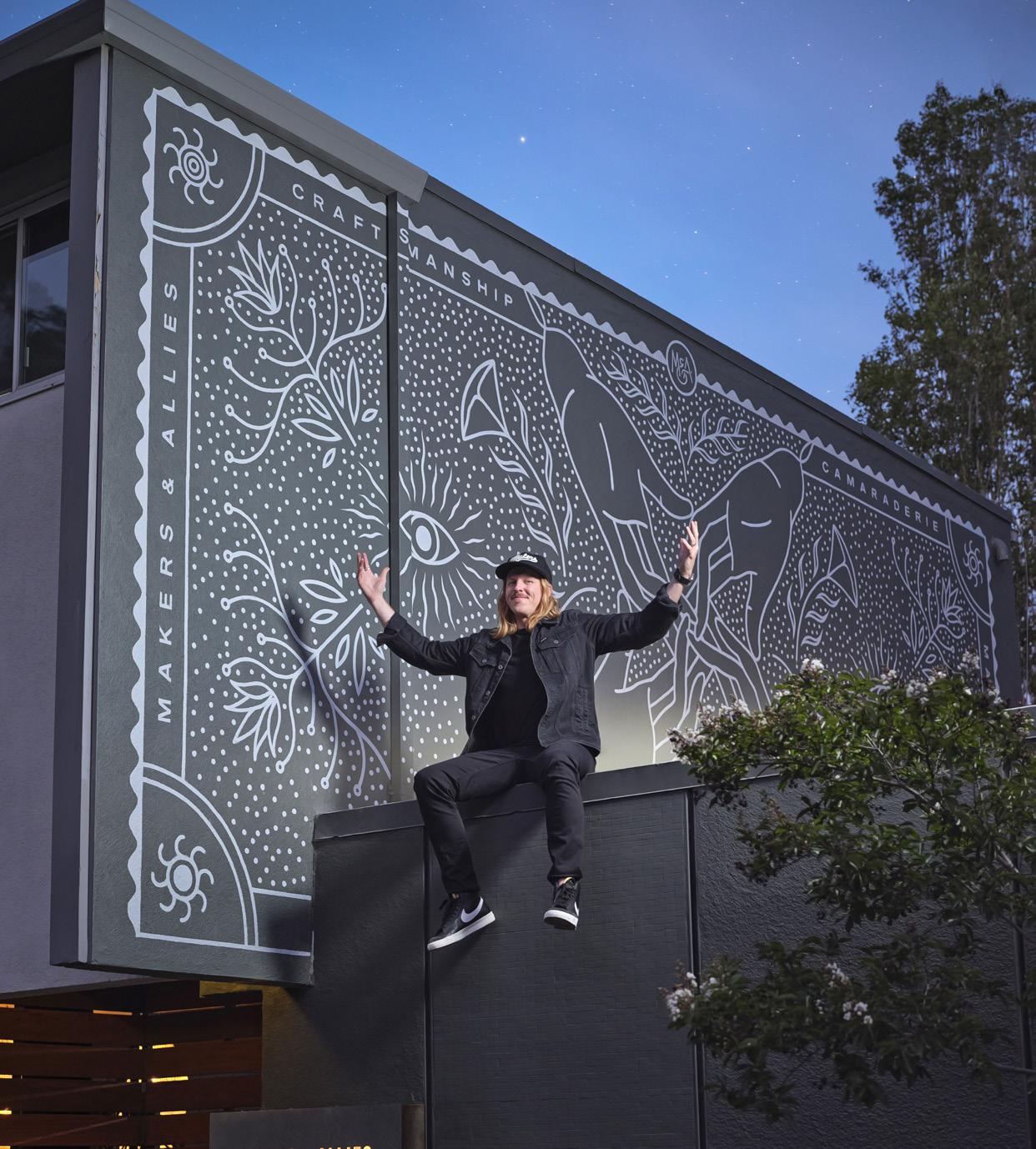
I teamed up with Andrew Layman, the Makers and Allies in-house Swiss army knife of photo production, to make this shoot happen. Together, we managed to cover four setups in an afternoon with Garrett. Time flew by and thousands of shots were made. When dusk approached, we wrapped the interior shoot and made our way to the final location.
With the help of Andrew and Garrett, I hauled the gear outside. Before we could climb up the roof to access the mural, a strong gust of wind blew down Marsh Street. Garrett grabbed onto the closest thing he could find—a young tree that lined the street. I, luckily, managed to catch the shot before I, too, was almost swept away. When the wind died down, we finished the shoot on the roof of the building. As the soft light of the setting sun gave way to the glow of the town lights, we captured a parting shot of Garrett in front of the Makers’ distinctive mural which reads: Crafstmanship, Camaraderie. SLO LIFE

Big hugs to our team of student designers as they head back to Cal Poly. We really appreciate your hard work and commitment to learning the craft and wish you the best in the academic year ahead. Our TEN OVER family can’t wait to see how you leave the world better than you found it.
Student designers Jonathan, Kyle and Karli are all smiles at their B:30 Summer Sendoff.




















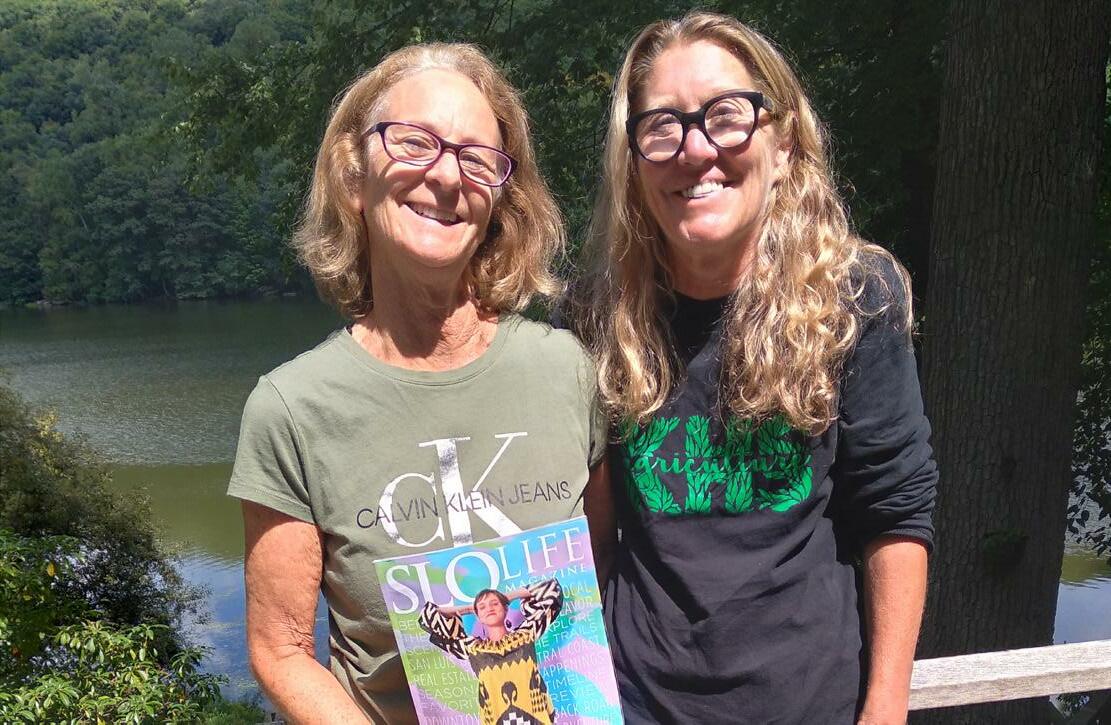

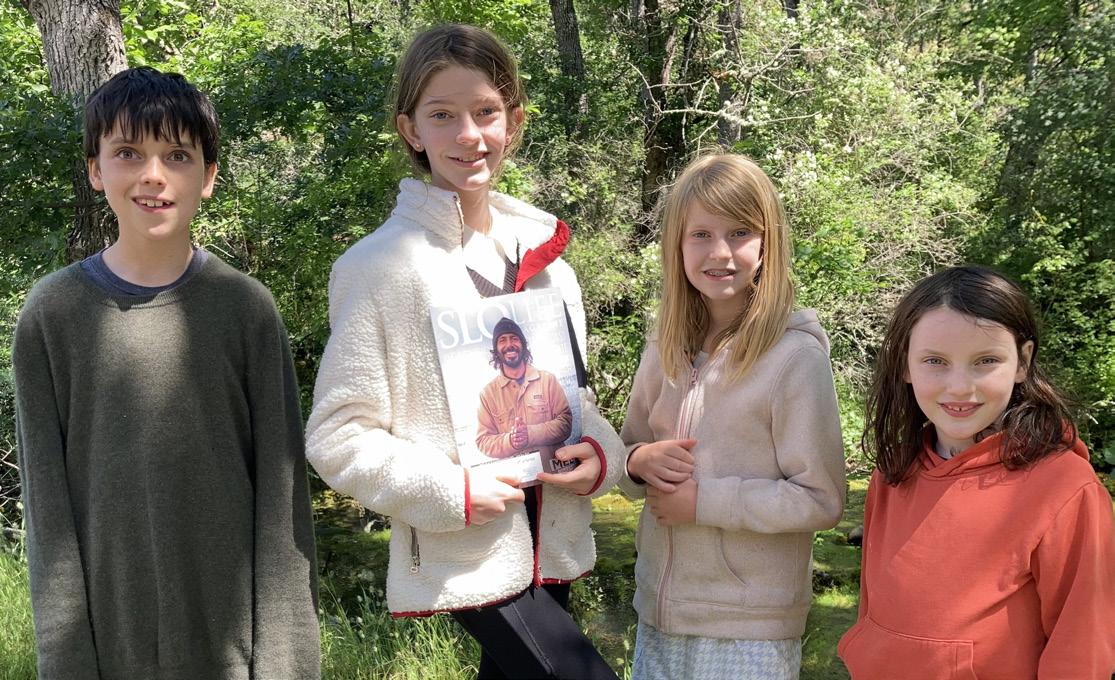

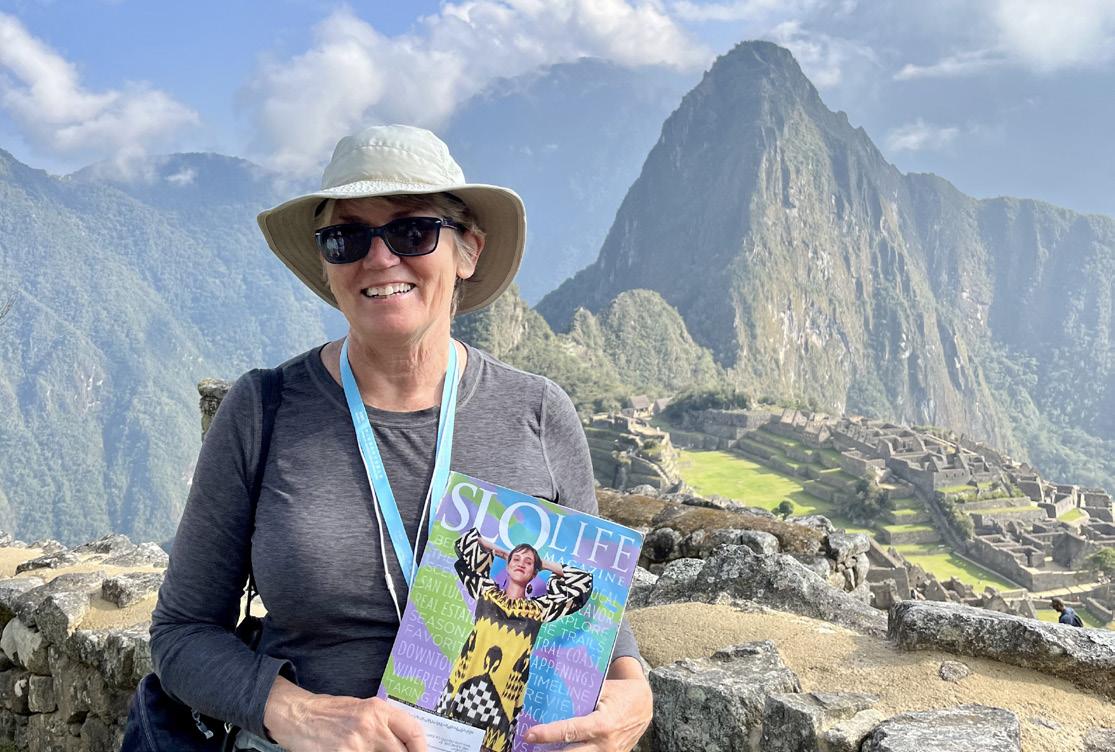

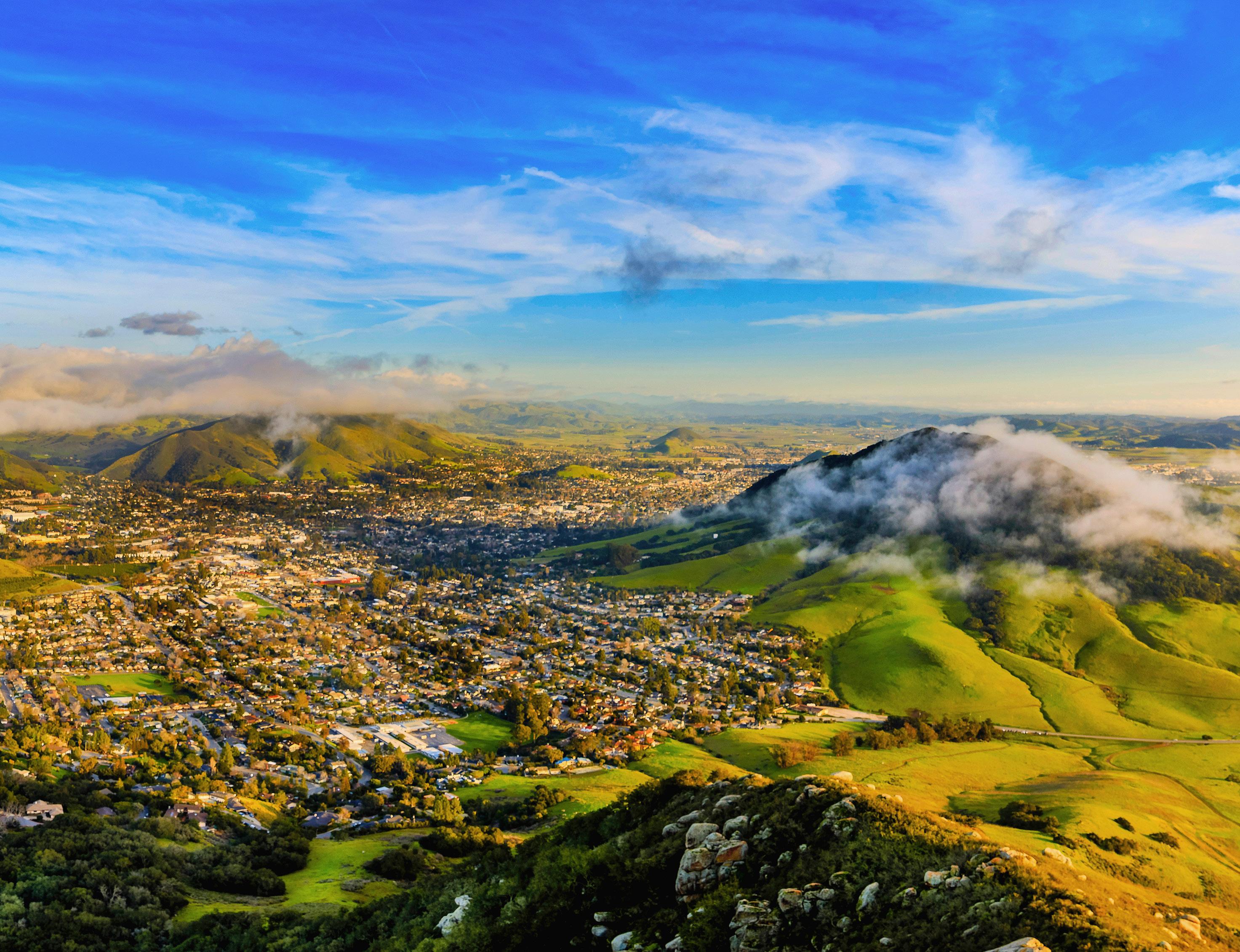





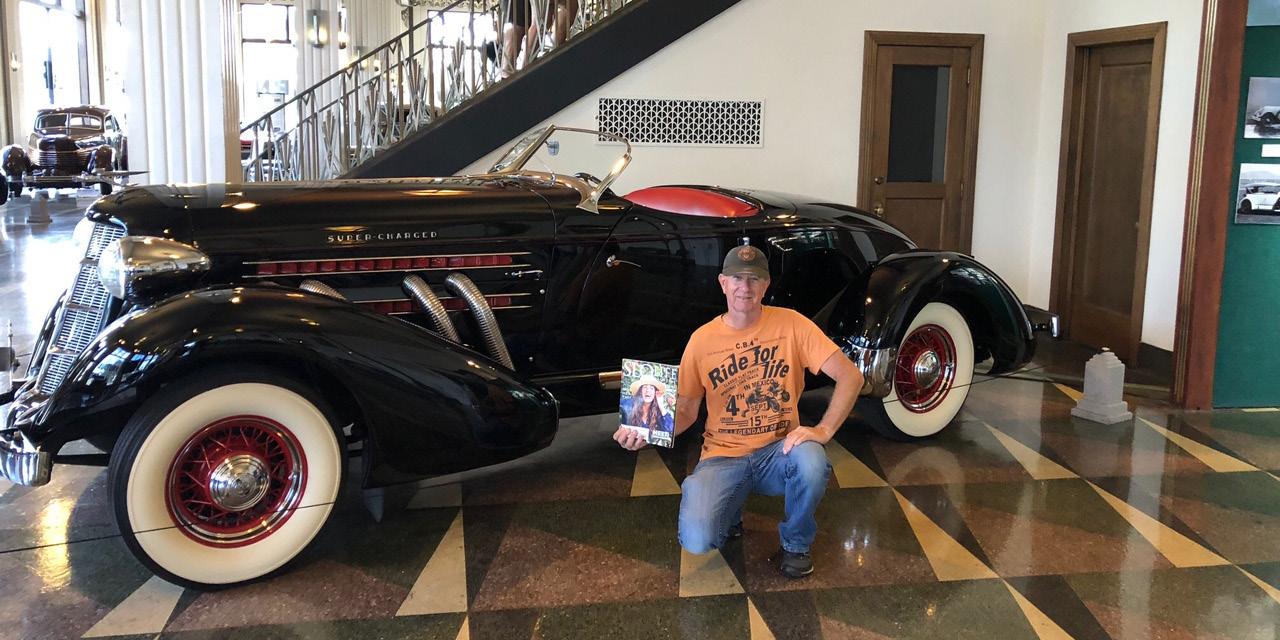














1. CHARLOTTE ALEXANDER is an awardwinning writer and editor with more than twenty years experience in nonprofit organizations, higher education, and media.

2. JEFF AL-MASHAT is a writer and visual artist with an MFA in painting from Georgia State University. He lives in Grover Beach.

3. MARIAH VANDENBERG has a background in neuroscience and is an active photographer, artist, musician, and outdoor enthusiast.

4. PADEN HUGHES is co-owner of Gymnazo and enjoys exploring the Central Coast.




5. In addition to being an interior designer, ZARA KHAN is also a shoe aficionado and horror movie enthusiast.

6. DAVID LALUSH is an architectural photographer here in San Luis Obispo.
7. JESS LERNER is a photographer based in SLO who loves the outdoors. You can check out her coastal photography at jesslerner.com or @jesslernerphotography.
8. JAIME LEWIS writes about food, drink, and the good life from her home in San Luis Obispo. Find her on Instagram and Twitter @jaimeclewis.

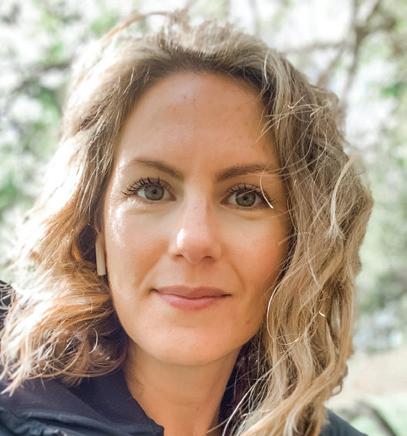

9. TODD MEANEY is a landscape, product, and lifestyle photographer living the SLO life. You can follow him @toddmeaney.photography.

10. BRANT MYERS is a the founder at slobiiig.com, a hospitality consulting firm, and Toddler Timber, where he makes wooden children’s toys.
11. MARK NAKAMURA is a wedding, portrait, sports, event, family, children, architectural, commercial, and landscape photographer. Find him on Instagram: @nakamuraphoto for landscape photography and @marknakamuraphoto for everything else.
12. ZACHARY SCOTT is a photographer known for his humorous and highly stylized work that has been featured in the New York Times Magazine, as well as GQ, Time Magazine, Wired, and New York Magazine
BRIAN SCHWARTZ is a publishing consultant and advocate for local authors. He can be reached at brian@selfpublish.org.









The U.S. Bureau of Land Manageme nt, the State of California, and several conservation groups reach an agreement to suspend new oil and gas leasing across more than one million acres of public lands in eight California counties, including San Luis Obispo. The accord, which resolves lawsuits filed in 2020 challenging the previous administration’s plan to expand drilling and fracking, protects schools, reservoirs, ecological reserves, and community landmarks, including Montaña de Oro State Park, Morro Rock, Lake Nacimiento, Camp Roberts, natural reserves in the City of SLO and the Carrizo Plains, and Cayucos and Whale Rock reservoirs.

California State Parks releases a report detailing how its current efforts to reduce the amount of unhealthy dust pollution blowing into inland communities from the Oceano Dunes State Vehicular Recreation Area have succeeded, and proposes no new dust reduction measures for the first time since 2017. Before it takes effect, the proposal must be approved by the SLO County Air Pollution Control District. State Parks has primarily used wind fencing and native vegetation plantings as its dust mitigation methods.
The mayors of nine Central Coast c ities send a letter to California Governor Gavin Newsom outlining their concerns as discussions about continued operation of Diablo Canyon nuclear power plant past its closure date gain momentum. John Headding (Morro Bay), Jeff Lee (Grover Beach), Steve Martin (Paso Robles), Heather Moreno (Atascadero), Jenelle Osborne (Lompoc), Alice Patino (Santa Maria), Caren Ray Russom (Arroyo Grande), Erica Stewart (San Luis Obispo), and Ed Waage (Pismo Beach) don’t address whether the plant should close or remain operational. Instead, they outline priorities— with safety first on the list—to include in any legislation should a bill to extend the life of Diablo Canyon advance.
After county planners worked several years to secure easements with two property owners, the SLO County Board of Supervisors unanimously supports a plan that allows the county to move forward with construction and improvements to the Ontario Ridge Trail. The easements make the full connection between the Cave Landing parking area and Shell Beach Road and Avila Drive, and allows the county to manage and maintain the trail. Hikers may not see changes for many years, however, depending on funding.
Owner Chris Mize officially closes the doors of the Jack Ranch Cafe on Highway 46 in Cholame. She’s worked there since 1992, and bought the business in 2012. Serving locals as well as travelers driving from the Central Valley to the Central Coast for at least five decades, the restaurant also served customers coming by to see the James Dean memorial in the parking lot and the spot nearby where the actor was killed in a car accident in 1955. There are no plans to continue a restaurant on the property, which is owned by the Hearst Corporation.
A California appellate court reaffirms a finding made in December 2020 by SLO Superior Court Judge Matthew Guerrero that the SLO County District Attorney’s Office cannot prosecute Tianna Arata and six other Black Lives Matter protesters for crimes they were charged with during a July 2020 protest. The justices agree that a “targeted fundraising” email on behalf of DA Dan Dow created a conflict of interest in the case. Arata and the other protesters were all charged with multiple crimes. Dow and the California Attorney General’s Office will now decide whether to take the ruling to the California Supreme Court.

The California state legislature passes Senate Bill 846 to extend operations at Diablo Canyon Power Plant up to 2030. The bill provides for a $160 million Land Conservation and Economic Development Plan, but does not affect the community impact mitigation funds that SLO County receives through SB 1090 and the settlement agreement between PG&E, county and city governments, San Luis Coastal Unified School District, and others. The measure, the legislature’s final act before it adjourned, passes by overwhelming majorities in both the Assembly (67-3) and the Senate (31-1), and occurs on the last day of the year that legislators could approve bills.
The City of Morro Bay hosts a community workshop about a Vistra Energy proposal that would bring a large-scale battery storage facility to the area. The project is set to be built on the location of the vacant Morro Bay Power Plant. Discussion includes the project’s design and scale, and the City Council’s agreement with Vistra that requires the company to demolish the old power plant by 2028 or pay the city three million dollars.

According to the National Weather Service, in the midst of a heatwave blanketing most of the Central Coast, Paso Robles sets a new record high of 108 degrees, two degrees higher than the previous record of 106 set exactly one year ago to the day. Five days earlier, San Luis Obispo’s high of 106 degrees broke a record that had stood since 1955. The record-breaking temperature in SLO is partially caused by Santa Lucia winds flowing down the Cuesta Grade.

Several local groups and agencies host events marking the twenty-one years since the deadliest terrorist attack in U.S. history, and honoring those who lost their lives. A “Day of Remembrance” ceremony held by city fire and police departments at the World Trade Center Memorial located in front of Fire Station One in San Luis Obispo features a bell ceremony, bagpipes, and reflections presented by American Legion writing contest winners from SLO High School.
The City of San Luis Obispo releases the results of its “Support Local” programs designed to help businesses rebound during the period July 2021 to June 2022. The metrics indicate that the programs helped raise awareness of local businesses and generate more than $870,000 in direct local spending through blogs and social media stories, leveraged ad campaigns, peak social media holiday posts, and a “Buy Local Bonus” initiative in which more than 4,400 shoppers submitted receipts to earn gift cards to local businesses.
The Cal Poly Rose Float team reveals its design for the upcoming 134th annual Pasadena Rose Parade, which reflects the 2023 Tournament of Roses theme “Turning the Corner,” symbolizing the positive change and unlimited potential that each new year can bring. The twenty-three-foot-tall float, “The Road to Reclamation,” is the seventy-fourth collaboration between students from Cal Poly SLO and Cal Poly Pomona, and features a colorful forest floor of giant snails, mushrooms, and fungi upon a fallen tree branch. Students at both universities are now busy building hydraulic systems, constructing frames and a structural base to support design elements, and searching for and growing plant materials such as sheets of clover for the float’s forest floor.
Words from the International Union for Conservation of Nature’s Red List in July declaring that the global population of butterflies, which includes the western Monarchs that frequent SLO County groves every winter, is now classified as endangered due to climate change, its declining population, and threats to its habitat. The Monarch population’s risk of extinction over the next twenty years is calculated at almost 100 percent.
Cal Poly shortstop Brooks Lee, son of longtime Cal Poly Coach Larry Lee, ranked eighth—the highest of any SLO County amateur player ever—in the Major League Baseball Draft when he was selected by the Minnesota Twins in July. Mission Prep grad Dylan Beavers of Paso Robles was selected thirty-third by the Baltimore Orioles after finishing his junior season at Cal Berkeley, and Cal Poly pitcher Drew Thorpe was selected sixtyfirst by the New York Yankees.
The percentage of its student body that Cal Poly says it eventually plans to house on-campus—that’s roughly 15,000 students. The university is housing about 8,300 students this fall, the highest number in its history.
Central Coast blood supplier Vitalant saw its blood reserve decline over the summer, dropping to nearly half of what was needed in August. Type O blood, the most frequently transfused blood type, declined to a one-day supply. Vitalant provides blood to twenty-two hospitals and health facilities on the Central Coast; potential donors can visit vitalant.org to make an appointment or confirm eligibility.
The total value—the highest ever—of SLO County agricultural products in 2021, a ten percent increase over 2020, according to an annual crop statistics report that attributed it to the success of strawberries and wine grapes. It was only the second time the County’s agricultural value passed the billion-dollar mark—the first time was in 2018, when crops were valued at $1.035 billion.
The number of pieces of “military equipment” owned by the SLO County Sheriff’s Office, as reported in its recent annual report to County Supervisors. The list includes items ranging from tear gas to armored vehicles, and firearms and ammunition of .50 caliber or greater.
The SLO County Sheriff’s Office received a 911 call that disconnected one evening in August. When Sheriff’s deputies were sent to the source of the call—the Zoo to You offices in Paso Robles—to investigate, they found no one (at least no human) had placed the call. Turned out it was “Route,” a Capuchin monkey, who found the agency’s cell phone and punched in the right combination of numbers.
According to the advocacy group PeopleForBikes, San Luis Obispo is one of the best American cities for cycling, ranking it twelfth on its list of 2022’s “Best Places To Bike.” The sixth annual listing ranked cities on bike access, opportunity, core services, shopping, recreation, and transit. The only cities in California ranked higher than SLO are Davis and Berkeley.
County Clerk-Recorder Elaina Cano announced in August the results of a recount of the SLO County Board of Supervisors’ District 4 race. The tally, which took eighteen days to complete, was identical to the original ballot count, and confirmed that Arroyo Grande City Councilmember Jimmy Paulding won the seat with 10,769 votes and incumbent Lynn Compton lost with 10,130 votes.
“Was someone trying to make us look like a monkey’s uncle?”
“Climate change has significantly impacted the migratory monarch butterfly.”
“We were





In the Spanish explorer’s diary of 1769, Gaspar de Portola’s expedition described Laguna Lake as a freshwater lagoon. It was the first historical mention of the lake.
In 2005, former SLO City Engineer Barbara Lynch said, “It was originally, I imagine, just a low spot.” While Dr. Tom Rice of Cal Poly stated, “Laguna Lake was more of a wetland, not a lake; but the two dams—at Madonna and Los Osos Valley Road— took what in the past was a historical wetland or seasonal lake and made it into a year round lake.”
Former Mayor Dave Romero, the San Luis Obispo’s city engineer and public works director in 1959, explained then that Perfumo Creek was diverted to flow into the lake to keep it filled with water.
Since that time, it hasn’t been easy—floods, droughts, and sediment have all plagued the body of water.
In mid-December, I hiked up to the top of Cerro San Luis to take in the Christmas tree lights that the Madonna family puts up every December at the pinnacle, when I decided to photograph this unique perspective. I arrived at the top where there must have been over a hundred Cal Poly students celebrating the end of finals, as well as graduation for many of them. I stayed for the sunset and photographed the lake and the surrounding lights before hiking down with the crowd of students.
Around 6:00 p.m., when we arrived at the Marsh Street trailhead, we were met by a park ranger informing us that we needed a permit and that we were to be back at the parking lot by 5:50 p.m., since sunset was at 4:50 p.m. Thankfully, we were let off with a warning instead of a $560 ticket.
Cerro San Luis (aka Madonna Mountain) is a great place to take in a view of Laguna Lake and San Luis Obispo. Just be aware that you want to be back to your car an hour after sunset.
 BY MARK NAKAMURA SLO LIFE
BY MARK NAKAMURA SLO LIFE
We caught up recently with ELAINA CANO during a visit to her Monterey Street office. Appointed as the San Luis Obispo County

extended her tenure by winning the election in June with two-thirds of the vote. Here are a few highlights from our conversation .
I am from Riverside in Southern California. Moved up to San Luis Obispo in 1992. My husband and I are childhood sweethearts. I’ve known him since I was eight, started dating him at twelve. He got a full ride scholarship to play football for Cal Poly, and I followed him, so that’s what led us up here to the Central Coast. My brother played Pop Warner [football] with him, that’s how we met. My brother told him, “Please watch out for my sister.” And he did. I have spent the last thirtyeight years of my fifty years on this planet with him. We will celebrate thirty years of marriage in December. We have three grown boys, born and raised in San Luis Obispo, and a baby granddaughter now, too.
There’s been a lot of talk about election fraud. Should we be worried?
has always been people who have concerns, it’s just gotten a lot louder in the last couple of years. Do I think people have a reason to be concerned? Absolutely not. Our laws here in California are so stringent, and the security we have is so far above and beyond the federal standards, it is insane. That’s why we only have three certified vendors in the state. The security that goes around it exceeds every other state in our country. There’s a lot that goes into doing elections. And we have these laws, these regulations, we have the state constitution, we have the government code. We have to follow all of it in order to ensure our elections are fully secured, that everybody’s votes count.
But, still, you’ve got some doubters. Yes, we do. And that’s what makes it difficult because we work so hard, and there’s still those questions, those doubts. But, if it was such a huge concern, then how come all these people aren’t asking us? Why are they going to the media, or talk radio, or the internet, instead? Why aren’t they asking me? Why aren’t they asking my staff? We’re here to help. We love the questions. Even for those who might want to accuse us of voter fraud, or not being transparent, we say, “Come down and visit us. Come down and meet us. Come watch what we do. Come let us explain the process to you. Let us show you the Dominion System. And then, if you still have questions, and if you still aren’t sure, then let’s keep the communication going.” That’s what we always encourage, but we don’t ever get any takers.

Let’s talk about the recent recount in the District 4 Supervisor’s race. How did it feel to go through the whole thing again only to find it was completely accurate, not a single change to the It was incredible. As a mom there’s times where you’re just so proud of your kids, of hitting their first baseball, or making a basket, or whatever. And because I was a candidate, I chose to recuse myself from a lot of the processes that were happening. I wasn’t back there during the counting of the ballots. I wasn’t involved in the creation of the ballots, nothing to do with vote-bymail when they came in for signature verification. I was completely hands-off because I didn’t want anybody to accuse me of doing anything that may look questionable. So, I sat in my office, and they would come to me with questions, don’t get me wrong, I could pull up my cameras in the back so I could monitor and see what was going on, and then do what I could to help from there. But it was my team that did it. I managed from the press box, as they say in football. And I got to look down on the field at my players, and I was rooting them on. But they did it. And it was an
Okay, one last question: What do you Well, I certainly enjoy being out and about anywhere in this county. We don’t travel much, and it’s predominantly because I don’t feel the need to. I love going up to Linn’s in Cambria for a piece of pie; or going to the beach and walking down the Pismo Pier; or up to Paso. I mean, we just find things locally, we’ve always done that. There’s no reason why we need to leave here. We love spending time in the Village, going to see music, going to the theater, going to the PAC. We’re living the SLO Life, going to Santa Margarita and having breakfast, or taking a drive out to Pozo, there’s so much here, which is why we’ve sacrificed to stay here. We never wanted to go back to Riverside. We didn’t care how poor we were, we didn’t care if we were only eating macaroni and cheese and Top Ramen, we were going to make it work, and it certainly has paid off for us. We wouldn’t




 BY JOE PAYNE PHOTOGRAPHY BY GUNNER VELTON & CONNECT THE COAST
BY JOE PAYNE PHOTOGRAPHY BY GUNNER VELTON & CONNECT THE COAST



L
ocal music scenes tend to change over the years; bands come and go, venues close or reconfigure, and audiences crave one sound over another. For local rapper Lorde Sanctus, who spearheads the online art collective and music label Connect The Coast, he’s seen the hip-hop scene in San Luis Obispo and the surrounding areas go from nearly nonexistent to a growing and thriving community. That growth didn’t come about by accident, he explained, but through intentional cultivation by artists and fans alike.
Growing up on the Central Coast, Lorde Sanctus shared a common experience with lots of hip-hop fans and aspiring artists who were often maligned and excluded, even unfairly singled out by school staff or told their music didn’t belong at popular music venues. Facing barriers fortified by class and race, rap artists and fans often felt like they didn’t belong. He left the area to pursue music, got signed, and toured as a hip-hop artist. Upon returning to the Central Coast, he knew there must be a way to help unite the people who loved what he loved. “I just wanted to create an environment where people who felt like me could feel safe and feel welcome,” Sanctus said. “I kinda wanted to be a resource for younger people who wanted to be creative and monetize their content and be a professional creative.”


With the help of close friends and collaborators, Connect the Coast began as an independent record label and collective of like-minded artists who found places to perform and amassed an online audience that would support their shows. Now, four years later, the group has produced its first full album boosting off the success of their 2022 summertime single “Good Day.” Regular listeners of Wild 106.1 will recognize “Good Day,” which the station proclaimed was the “Central Coast Summer Anthem” after it was the most requested song.
There’s no doubt that “Good Day” slaps as a single with its catchy instrumental track and earworm hook, but the song truly shines with its crew. The verse breaks give a chance for Niko Cochi$e, Cav, Jay Rielly, and $horty Duwop—all artists who hail from up and down the Central Coast—to flex their rhymes. They also welcomed more collaborators to join in on the hook, including Santa Maria DJ Mr. Butter, Passport Chris, and Sanctus’ kids Mikayla and Jolee.
“Good Day” has an infectious positivity that has spread across the Central Coast, but it can also go viral in the Metaverse. The song is an early example of a music NFT, which adds the digital audio file to the NEAR NFT blockchain, which Sanctus said is an eco-friendly example of cryptocurrency blockchain technology. Connect the Coast uses NFT’s to welcome fans from across the world to enjoy their songs along with original artwork in digital spaces, including an entirely virtual nightclub, which are all available at connectthecoast.co. “We created this song with the intention of creating the catchiest music NFT to ever be made,” he said. “And I think we did a good job. It’s super catchy, it’s easy to sing, it makes you feel good when you hear it, and I think that’s why people gravitate towards it.”
Ten years ago, inspiration struck GARRETT DEITER as he and his wife, Sarah, gazed upon the sea of wine bottles in the grocery store. They all looked the same. The couple had refined their design sensibilities at Cal Poly and were looking for a way to remain in San Luis Obispo after graduation. While the freelance projects were paying the bills—barely—they were not inspiring the type of contributions they were hoping to make within the community they had grown to love. So, they took a leap of faith and began servicing tiny, start-up wineries, breweries, and distilleries. One thing led to another and soon the couple found themselves co-founding a business they call Makers & Allies. Today, in addition to celebrating their daughter’s first birthday, their design firm employs sixteen people in downtown San Luis Obispo. We sat down for a wide-ranging visit with Garrett recently. Here is his story . . .


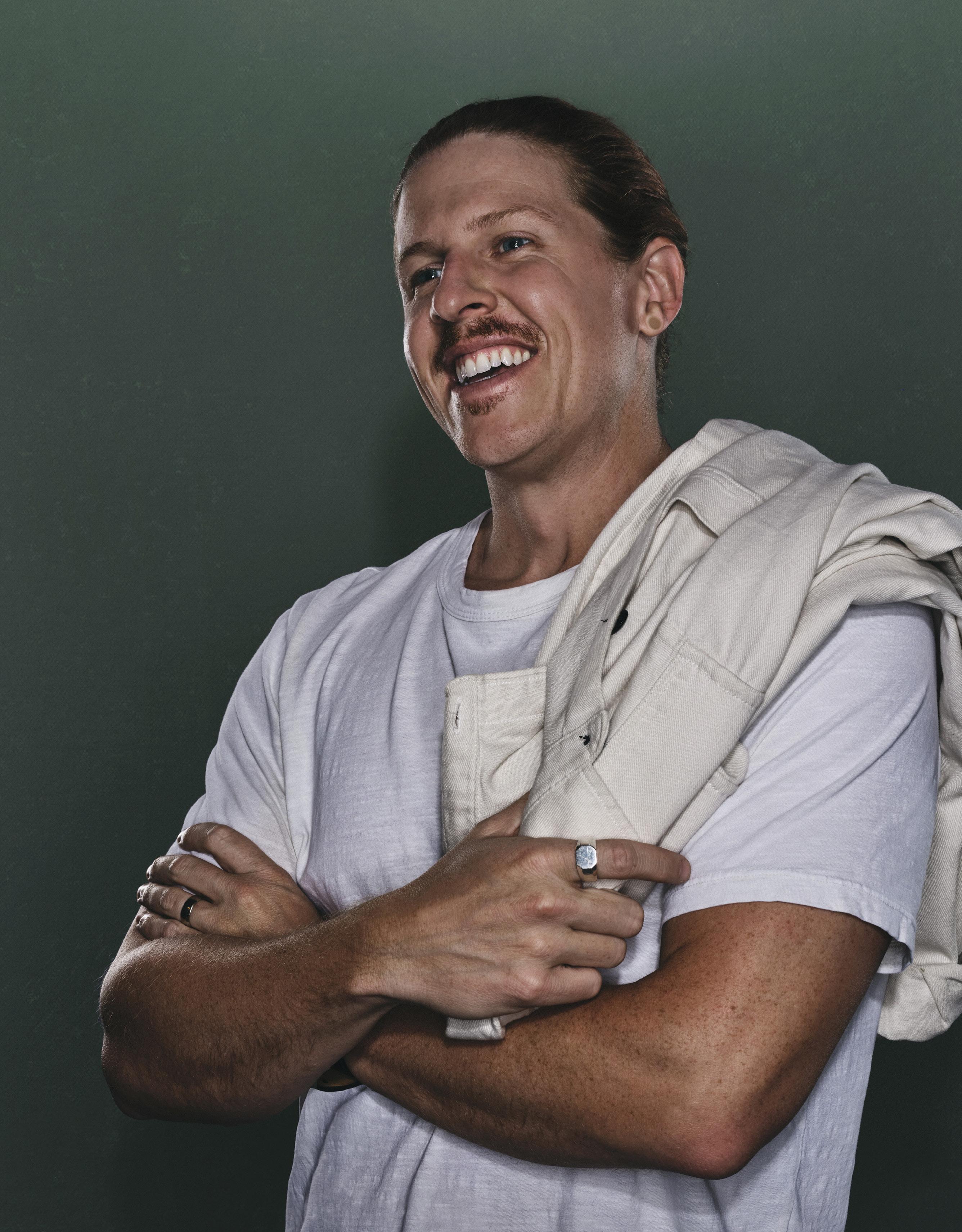
kay, Garrett, let’s start from the beginning. Where are you from?
Well, I grew up in San Jose on the other side of the hill from Santa Cruz, which was forty minutes away. I was at the beach every second I could. I was always begging my parents to drive me over the hill. I just remember making a beeline for the water and staying out
there until the second we’d leave. By the time I was old enough to drive, I was there pretty much all the time. I have a younger sister, and we had a great upbringing. I was a high-energy kid and really connected to skateboarding and surfing at a really young age. It gave me my sense of community, but there was also something about the style and design and art that went along with it that appealed to me. That whole scene had a big influence on me.
What about your parents, what did they do for a living? They were both very hardworking—God bless their souls—it was a pretty classic family set-up with my mom always doing work that allowed her to mostly be home with us. And, my dad, he was in tech. He put in a lot of hours on the road. I just remember watching him leave every week. He traveled a ton. He’d put on his suit and tie and head out the door early. So, for me, early on, I had this persistent, recurring thought where I told myself, “I’m going to need to find something different, so I don’t have to wear a suit and go to work every day.”
Where did that lead? At an early age, it took me into, I think, a little bit more of a creative pursuit, maybe even early-stage entrepreneurship. I developed an interest in it anyway. At the time, I was so all-in with skateboarding, just hanging out with my friends and skating. There was this sense of freedom, this sense of possibility. I was so engaged with that. And, maybe that’s part of something I was seeking, just this non-traditional, somewhat countercultural thing, and really identifying myself as being outside of what most would have considered the traditional norms. That gave me, at that point anyway, a sense of identity and maybe a different perspective. Add to that the fact that I was really into the creative aspect of it. I love graphic skateboard art, the style. I thought that was so cool.
What about college? The only thing I really cared about after high school, well, I guess there were two things: I had to be somewhere close to the ocean, and I had to do art. I was totally committed to those things. I knew for sure that’s what I wanted. I wasn’t like one of those teenagers that wasn’t sure what they wanted to do with their life. I was like, “That’s that, I’m going to art and design school.” I’ll never forget rolling into San Luis Obispo with my parents to check out Cal Poly. It just clicked instantly, the whole vibe, everything. I just “fell in love” as you hear so many people say when they visit San Luis for the first time. I said, “I have to figure out how to live here.” So, I applied and was lucky enough to get into the art design school.
And, so, what were your first impressions of Cal Poly? I remember my first day walking into the hallway of lockers filled with paint spatters, colorful graphics, and stickers. It was awesome, and I felt >>

very in the right place. There was an art gallery for rotating shows, a painting studio, outdoor sculpture space, graphic design drafting rooms, and a photo studio. I felt like I had all the tools right at my fingertips for the first time and wanted to experiment as much as I could. These were the stomping grounds where I really started to become obsessed with the design world. That’s also where I met my wife, Sarah.
Do tell . . . She was a Fine Art major, and I was a Graphic Design major. We had a few shared classes together where we decided to team up on some projects. These projects were never small undertakings. We would just pump each other up to try to pull off something big in some ridiculous amount of time. Our first few projects together were these large-scale installation sculpture creations we decided to set out to make into a video time-lapse series. We had an awesome time working together. We were serious about what we were doing but having fun along the way. There was a lot of excitement, conceptual debates, laughing, and some sleepless nights pulling off these crazy projects together. This turned into us working on stuff together outside of class, as well. We even did a few
shows together in L.A. where we would do large-scale live mural painting collaborations at events with other artists. It was rad. So, long story short, you can probably see how this turned into us dating.
What came next? So many people graduate and they’re like, “I’m going to Los Angeles. I’m going to San Francisco.” But I felt like I had grown up here and wanted to stay. So did Sarah. She’s from Minneapolis, so it was an easy sell. Making it work here wasn’t easy, like a magic wand, here’s this great idea. Instead, it was just a long series of trial and error, sort of many work experiments one after another. We were both doing all sorts of odd jobs, mostly freelance design stuff. It was all over the place, the full spectrum. At one point, early on, we both went to work for different companies for a while—tried different things in our creative careers, our design careers. But we found ourselves wanting to do something of our own, and to create, to do something that felt relevant to the area we lived.
And what form did that take? So, for us, that really started to become about wine, beer, craft, and spirits. I mean, we’re in this incredible >>


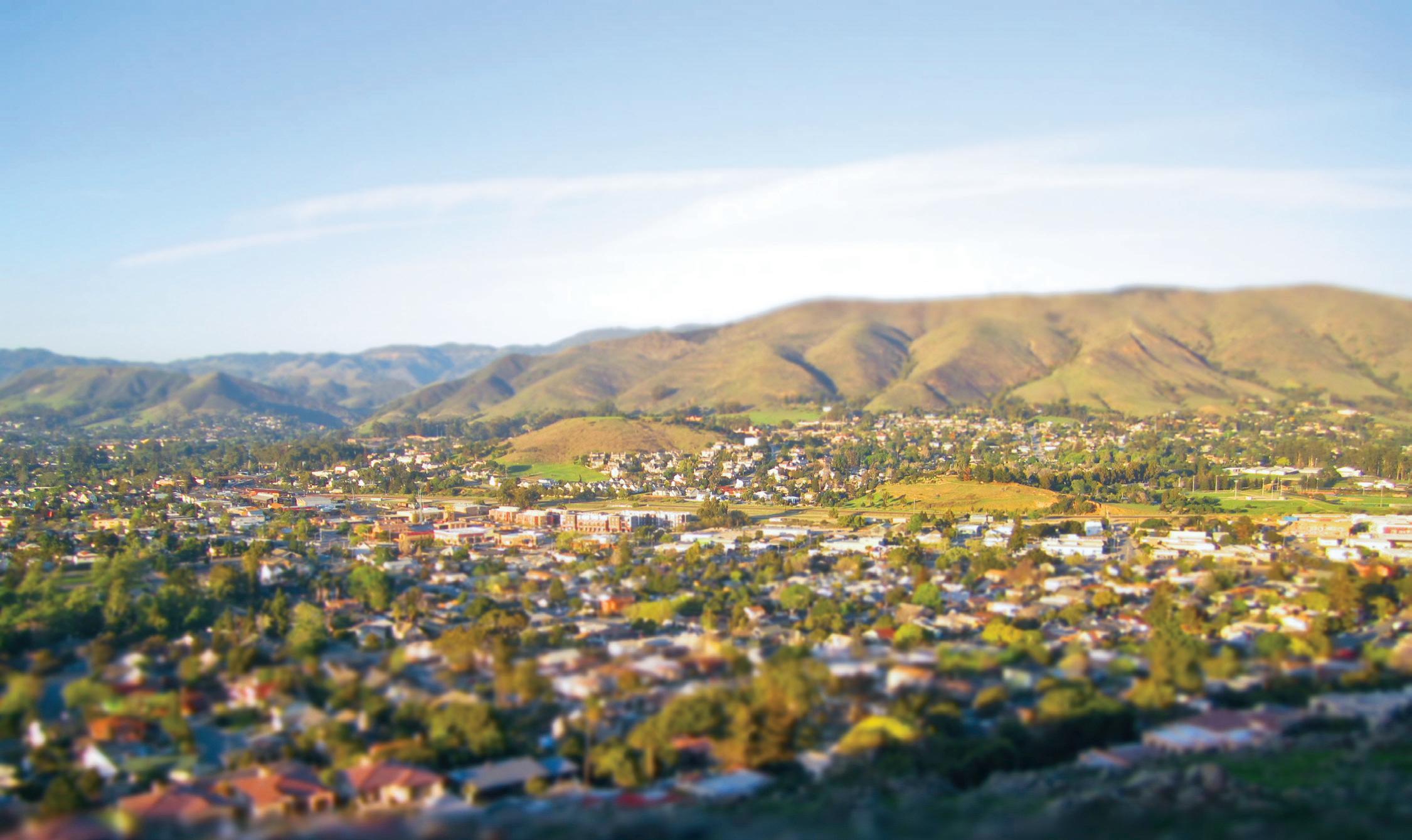
be worth more than you think.
1865 to find out

producing region and we found that there’s a real sense of community here, around that. We decided that we could be part of it. We felt that we could contribute from a different angle, from a design, from a creative angle. This was ten years ago now. We’d go to the grocery store, and you’d see two aisles filled top-to-bottom with wine bottles and spirit bottles. An amazing number of options, hundreds of options, top shelf to bottom shelf, all different sorts of price points. We realized that although it’s the output of a more agricultural-type business, it’s also very expressive and subjective. And we just thought there was a huge missing opportunity with the way these brands were presenting themselves creatively, from a design standpoint. We’d walk up and down the aisle and say to each other, “Hey, you know what, all these labels look the same.”
What came next? We started to dip our toe in the water and work with some small producers, work on some small products. Then, we took on a rebrand project with a craft brewery. And when we started doing that, we started realizing how much potential there was, how much story was being told. And how we could do that in a way that when someone’s walking down the aisle, certain bottles are standing out to them, and
pulling them in, telling them more. So, that’s really how we started. And we told ourselves from the very beginning that we wanted to commit to having a focus, as a design shop. We wanted to become experts, we wanted to go deep. So, we made a real true commitment to wine, craft, and spirits. We had lots of people coming to us for other types of things after we had launched a few projects. And one of the hardest things early on was telling them, “No.”
What advice would you give to someone considering entrepreneurship? I would say, try a lot of things, experiment. And when you find the thing that you get most excited about, that you feel like you connect with, that’s probably the thing that you have the most amount of potential to become the best at. Because you will, and can become, obsessed with the mission. You know what I mean? For me, anyway, I love working on wine and spirits so much that when I’m working I don’t even really think of it as work, it’s just life. And that is a really liberating feeling. But, again, I would say try to find that thing. And when you do, go deep. Learn everything about it. Don’t just stay on the surface, meet everyone you can in that industry. Immerse yourself as much as possible >>



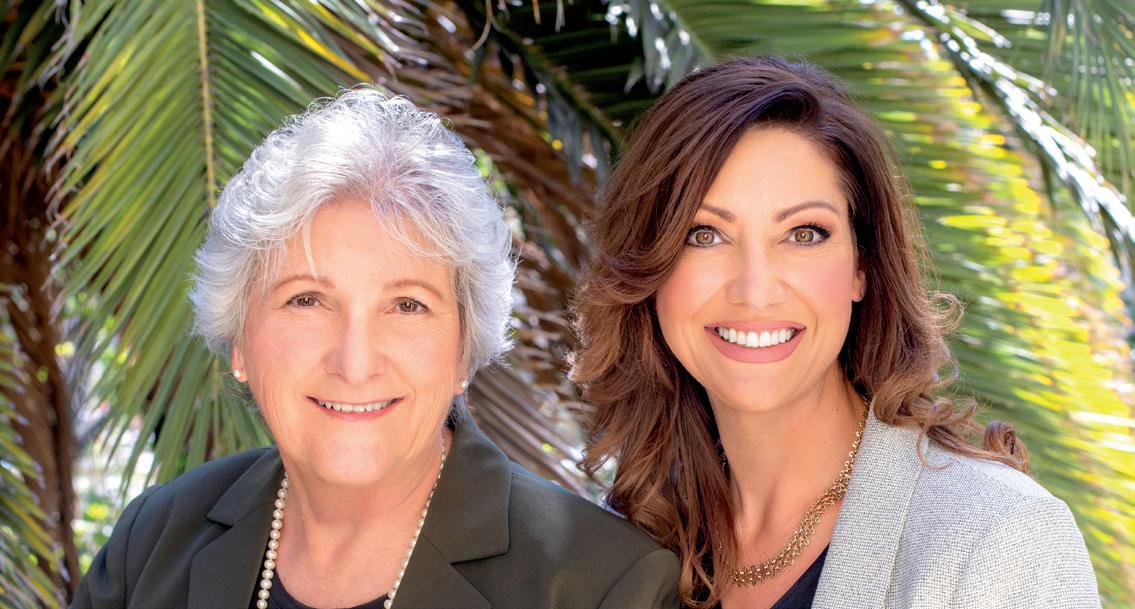


and commit. To me, that’s been a big thing: commitment. When you commit to something and you say, “This is what I’m doing, this is what all my energy’s going to be focused on.” It’s such a refreshing feeling. And it allows you to just give yourself permission to spend an almost unreasonable amount of time on that thing.
Give us an example of an “unreasonable amount of time.” Yeah, sure. I like the idea of working when everybody else is asleep. I’ve found a few other people, a very small group, who feel the same way. It’s either very early in the morning when no one’s up yet, or late at night where everyone’s asleep. And there’s something about that creative hour that—I don’t like to overuse it, because you still have to wake up and perform when everyone else is awake—but I just love that time. That feeling of there’s nothing else to disturb this creative process right now. And it just flows. It’s almost like it comes from somewhere else, like outside of you. I know it sounds weird, but when it hits, you go into some other state, some other place. Sarah and I had many of those sorts of nights, especially early on when we were getting started. Everyone’s asleep, and we’re pushing
ourselves to come up with something new, something to break through. It’s a very special, very rare creative space.
What does the future hold for your business? You know, our mission, as a company, is that we want to be known as one of the most influential design and branding studios in the alcohol beverage industry. So, we’re always working backwards from that point. We want to grow, so that we can support that mission. But we want to grow at a pace where we can be thoughtful about attracting the right clients, clients who have a similar mindset. It’s funny, but when we consider taking on a new client, we really think it through, asking ourselves questions like, “Are they a good fit for us creatively? Are we going to be able to do some of the best creative work with them? Are they ready for that? Are they a cultural fit?” But we look at it from a few different angles, and I feel like that helps us grow in the right direction. And, so, this process of going deep and being thoughtful, that’s really important, and I feel like that builds a foundation that’s strong and lasting—not only for us, but for everyone we touch, everybody, the entire community.





you feel like you are being let in on a secret. Buildings and objects in the distance are framed, and in some cases, obscured by flowers and plants. Instinctually, a viewer might look past this flora on first glance. But what she is really revealing is the importance of those flowers and plants as part of her artistic vision.
“I am really interested in the idea of native plants and how they are often being overtaken by vegetation that is planted to make an area seem more appealing,” says Paulick. “In my paintings, I use native plants at the forefront to often block manmade objects. Hiding behind the plants is my way of being in my own world and watching the rest of the world go by,” says Paulick.
Paulick’s painting examines the conflict between what others might want us to see as important, versus simply appreciating what is already in front of us. After the tragic loss of her older sister, Julia, who was killed by a drunk driver, Paulick left the safe and stable world of graphic design to delve into her painting. She says that painting was something that she had been scared to face before. But after losing her sister, the same sister who always encouraged her painting, she used her art as a way to heal and continues to use it to stay grounded in the present.
Her artistic process, and choice of materials, echoes the sense of friction in her artistic vision. She starts with acrylics, a manmade, engineered paint, to lay down the initial image. She finishes by painting on top of the original image, sometimes covering it completely with oil paint, a medium based largely in organic materials.


Paulick’s painting invokes that of Paul Cezanne, with a playfulness of perspective and shifting of objects’ natural sizes throughout her work. Like Cezanne, Paulick’s work contains a variety of objects or images, both near and far, that move your eyes to different sections of each painting. There is a here and now in each piece, but it competes for attention with other images that are far away and out of reach, reinforcing her theme of embracing the moment.


Our community gathered in record numbers for the return of the Foundation’s Gala and Sidecar Loading Dock party on August 27th. The event was full of circus-themed menagerie, fanfare, and fun! The generosity of our guests and sponsors helped us raise more funds in support of the performing arts than ever before. The philanthropy of our community is instrumental in helping our local arts community regain momentum after the difficult years of the pandemic. Thank you to all who support our mission of elevating the arts in San Luis Obispo County. To learn more, visit fpacslo.org.











foundation for the performing arts center’sShay and Erica Stewart Leann Standish and Adam Montiel Morgen Houlis Stephen Patrick, Todd LeMay and friends Courtney Meznarich and Kristin Hoover Geri LaChance, Ian Dillingham and Ruby WallauSarah Johnson and Courtney KienowTrudie and Ty Safreno











Marc Cortez sets out to be a voice of reason in the often controversial conversation surrounding climate change in his book Climaturity

Cortez is a former Cal Poly entrepreneurship professor and cleantech entrepreneur. He shares a common thread I often see with authors; discovering a purpose greater than oneself.

Most authors have to be willing to take a fair amount of criticism. But, when you put your opinion out there on the heated topic of climate change, you’re bound to get more than most. Cortez doesn’t shy away from others with opposing viewpoints. Avoiding conflict doesn’t lead to resolution, but rather drives us further apart. If we are going to have any hope of making a dent in an issue, we have to be willing to engage in honest dialogue about it. We have to look at the facts presented and understand that we all have some level of implicit bias we can’t see.
Cortez believes the truth of the ‘great climate debate’ lies somewhere between the two extremes. Denying that climate change exists is on one end of the spectrum. Forcing everyone to drive electric cars is on the other end. While solar is seen as a positive step, like wind power, it is not without its own share of the CO2 production pie.
We’re seeing evidence that any form of power generation isn’t without drawbacks. What we define as clean energy is subjective and the goal of a zero-carbon footprint falls short to reverse the impact we as humans are having on the planet. Think carbon-negative.
Cortez’s message is simple, yet without sponsorship from any single entity that would benefit (besides the planet). To lessen our impact on the climate, we need to consume less, drive less, and rediscover activities that don’t contribute to the problem. Be less swayed by marketers and look at the motives behind the claims. Plant more trees, eat less meat, and think about the collective impact of our daily choices. We can rise above our materialistic ways and support policies rooted in common sense and equality.
Marketers know how to spin any data to prove their point. We see it in documentaries that conveniently exclude evidence. Policies that fail to consider the economic impact will ultimately be met with resistance. In Climaturity, Cortez aims to show how the billions of dollars we’re spending on well-intended, but ultimately poorly thought out solutions will only widen the gap between the rich and poor and further economic rifts in our society (while passing on the tax burden to our children).
To a large extent, Climaturity is a whistle-blower tell-all of an exaggerated false narrative, that can only be told by someone who once played a part in crafting that narrative.
Convinced we are heading into oblivion? Take a closer look at all the facts and be open to a new point of view. The truth likely lies somewhere in the ‘muddy middle.’ See conflict as an indication that your assumptions may be at fault and stay open to opposing points of view. In the end, conflict can only be resolved by setting aside our pre-existing biases and engaging in respectful dialogue. Following Cortez’s prescription, aim to traverse through life more gently and value the delicate nature of the world we must coexist in and become an advocate for truth. Learn more and connect with Cortez at Climaturity.com.

















When I heard Santa Margarita Ranch began offering sunset zip line tours, I enthusiastically signed up.

Just a quick ten-minute drive from our home in downtown SLO, my husband, Michael, and I found ourselves on-site near dusk. Riding in a bus with fellow zip line enthusiasts, we took in the sights of rabbits, turkeys, deer, and eagles as we maneuvered along the trail to the start of the course. It was an entertaining ride and our driver shared interesting tidbits along the way. Santa Margarita Ranch has been operational since 1774 and is the oldest continuous cattle ranch in California. We also learned that we’d be riding on six zip lines spanning over a mile-and-a-half and would even be zipping over some of the 900 acres of vineyards that are used to grow grapes for Ancient Peaks Winery.
When we arrived at the course, we slipped into our harnesses and helmets and jumped into the back of an army jeep, which took us to the top of the first zip line. We learned one thing right off the bat: our tour guide was a wizard with zip line safety, and we really didn’t have to do anything except face our fear of heights. Thankfully, for Michael and me, this was very easy, and we volunteered to go first every single time.
The sunset zip line tour runs at dusk and changes throughout the year with tours starting at 5:30 p.m. in October.
Adult prices are $109 on weekdays and $129 on weekends per person. Children over thirty pounds can ride tandem for $79 on weekdays and $89 on weekends per person. Ride along price excluding zip lining is $40.
First up was a double barrel zip line, meaning there are two parallel cables, so Michael and I were able to ride side-by-side together, which we loved. We propelled down the zip line and flew over the beautiful rows of grapevines below us. The warm golden light of the end of the day lit the entire valley up in such a magical way. We fell in love with the experience right then.
From there, we headed out to a 300-foot suspension bridge reminiscent of an Indiana Jones movie. It was followed by a light hike to the second zip line where Michael sailed through the sky as a large golden eagle flew alongside of him before landing on the cable to relax. It was an incredible sight.
We enjoyed four more zip lines as the sun set and the golden light gave way to the cool blue hues of the evening sky. But it was the fifth zip line, when we spotted the huge full moon peaking over the tree line, that the magic happened. We stayed there watching the moon rise—it was one of the most peaceful risings I’ve ever witnessed.
By the time we reached the sixth and final zip line, we were heading into total darkness. The thought of running and jumping off a hillside into the dark abyss was a little unsettling, but it afforded an unforgettable view of the full moon giving off a peaceful glow in the midst of the dark void. We had all been outfitted with glow sticks, which allowed us to spot our fellow riders at the end of the course before decelerating.
It was truly one of the best experiences we’ve had on the Central Coast and reminded us both of our adventurous sides. We loved it and highly recommend it for parties, date nights, and team building.



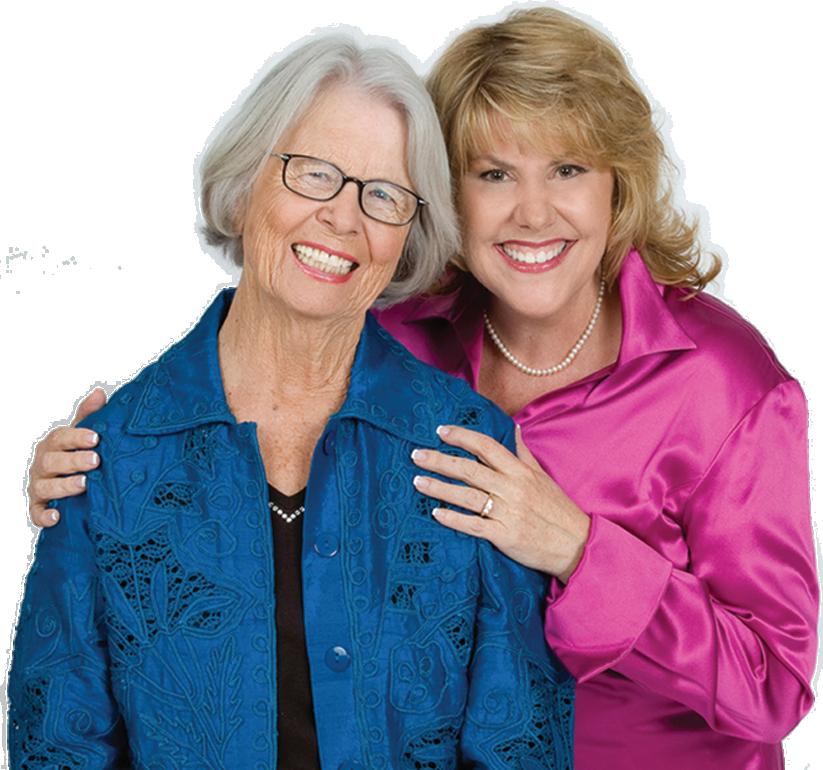


Achieving the Mayor’s Award for Community Service, Academic Excellence Award, and College Board Outstanding AP Scholar Award, this San Luis Obispo High School senior is heading toward a bright future.
What are you involved of outside of school? Lots of dance! Primarily ballet, some jazz and contemporary; over twenty hours a week. I also love going to the beach, hanging out with my friends, and spending time in nature.

Do you have a career path in mind?
I know that I want to major in history in college considering my fascination with it and my success with it in my classes at school. With that, I’m thinking of becoming a lawyer because it entails a keen knowledge of history. Because I also love the environment, I’m looking to combine this passion with history and law in the form of passing legislation to help alleviate climate change or something along those lines.
What is your biggest influence? I’d say dance has taught me how to work hard to reach my goals, work well with others, and self discipline. One of my favorite memories has to be the day I received the lead role of “Clara” in
The Nutcracker because all of my hard work had finally paid off and my younger self’s dreams were coming true. The joy and excitement of the moment brought tears to my eyes and I was overwhelmed by hugs and congratulations.
If you won $1 million, what would you do with it? I’d donate it all to the cause of helping the planet because the world seems to be blind to the fact that our ecosystems are deteriorating and life on Earth is nearing a point where it will no longer be sustainable. Humans have ravaged and exploited the beauty of the natural world and it’s time for something to be done about it, for the damage to be reversed.
What are you looking forward to? I’m excited to go off to college because I can explore while making new friends, learning about things I’m interested in, and experiencing new things.
What schools are you considering? UC Berkeley, UCLA, USC, UCSD, UCSB, UC Irvine, UC Davis, Wake Forest, William and Mary, Brown, Notre Dame, and more!
LIFE
a student On the Rise?

One of the most common owls in North America, the Great Horned Owl is a fearless predator. A wildlife rescue, Oscar is the silent type, a good listener who loves small furry snacks and late nights. Male and female owls remain monogamous and are thought to mate for life. It’s likely you will hear their hoots on an autumn evening. SLO LIFE





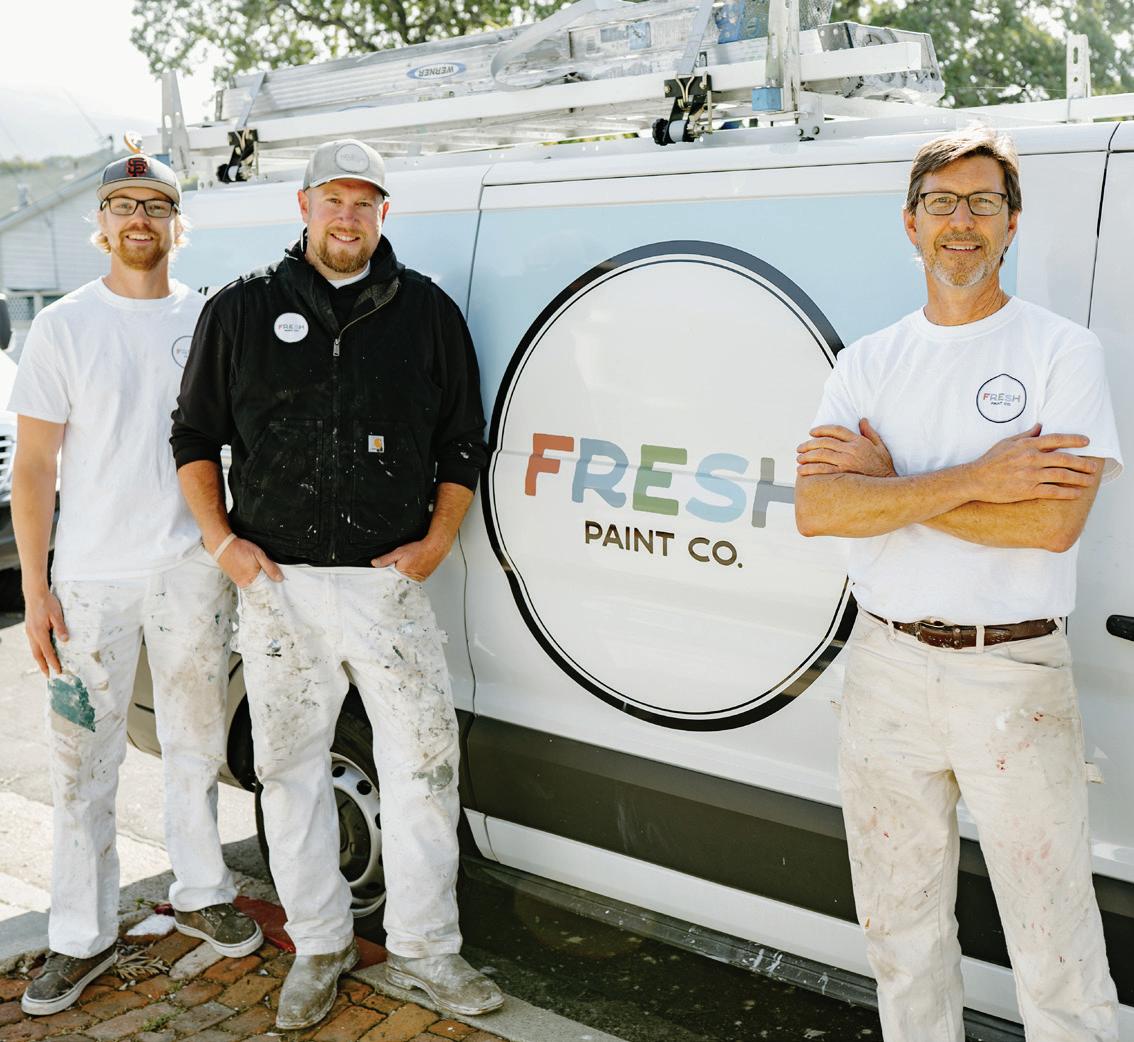
Sub-Zero, the preservation specialist. Wolf, the cooling specialist. Cove, the dishwashing specialist.

THEM
AT YOUR

You won’t find them in ordinary kitchens. Or at ordinary stores.




NNew construction isn’t for the faint of heart. It requires a lot of time and is a balancing act between city planning, costs, scheduling, and design. Luckily, Dave Gales and Bob Wachob had experience as well as realistic expectations before they decided to move forward with building their dream home. Gales worked in architecture and design during the early part of his career and now integrates technology into commercial settings. Wachob had several remodels under his belt from his time living in Philadelphia and he grew up with a father who was an interior designer. While wine tasting on the Central Coast for a birthday weekend, the pair began chatting about the ideal place to retire. It wasn’t hard to look around and realize they could get used to the relaxed Central Coast lifestyle after living in Los Angeles for so long. When a six-acre property in Atascadero came on the market, they decided it was time to take the leap. >>


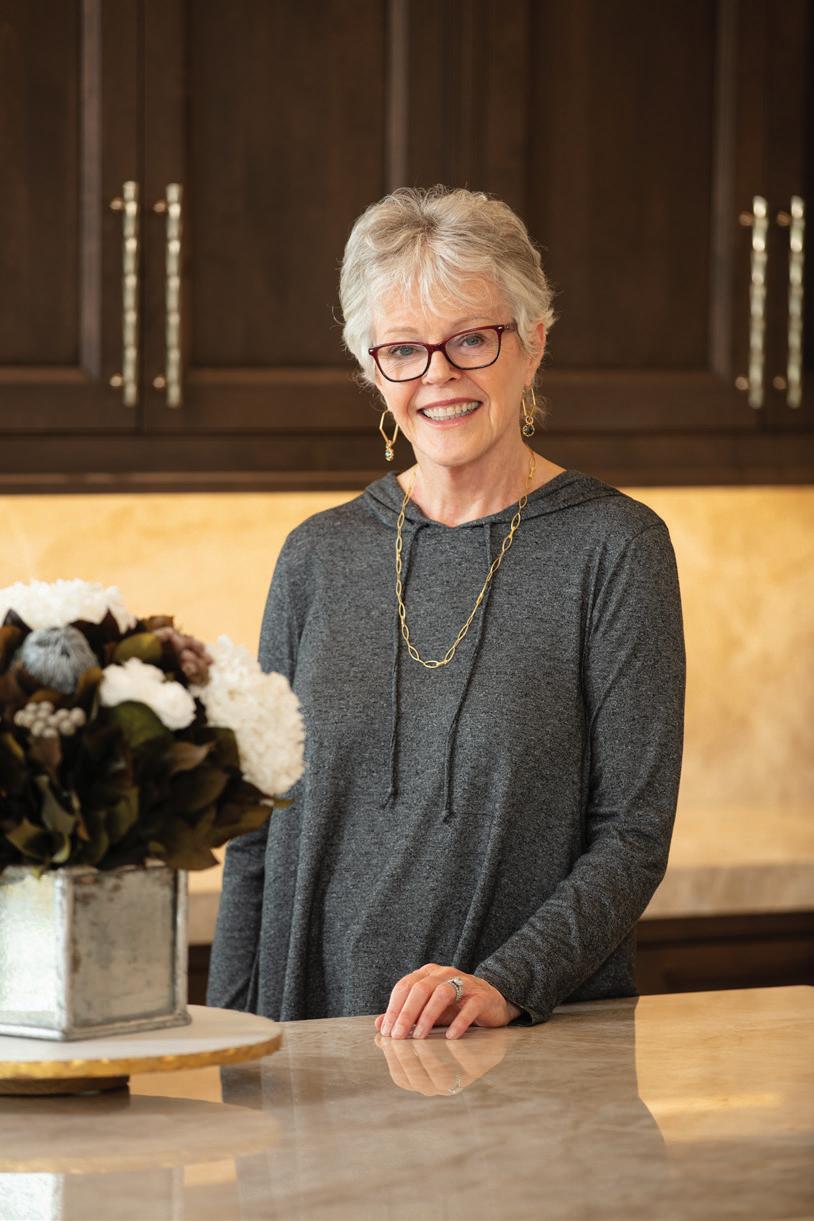



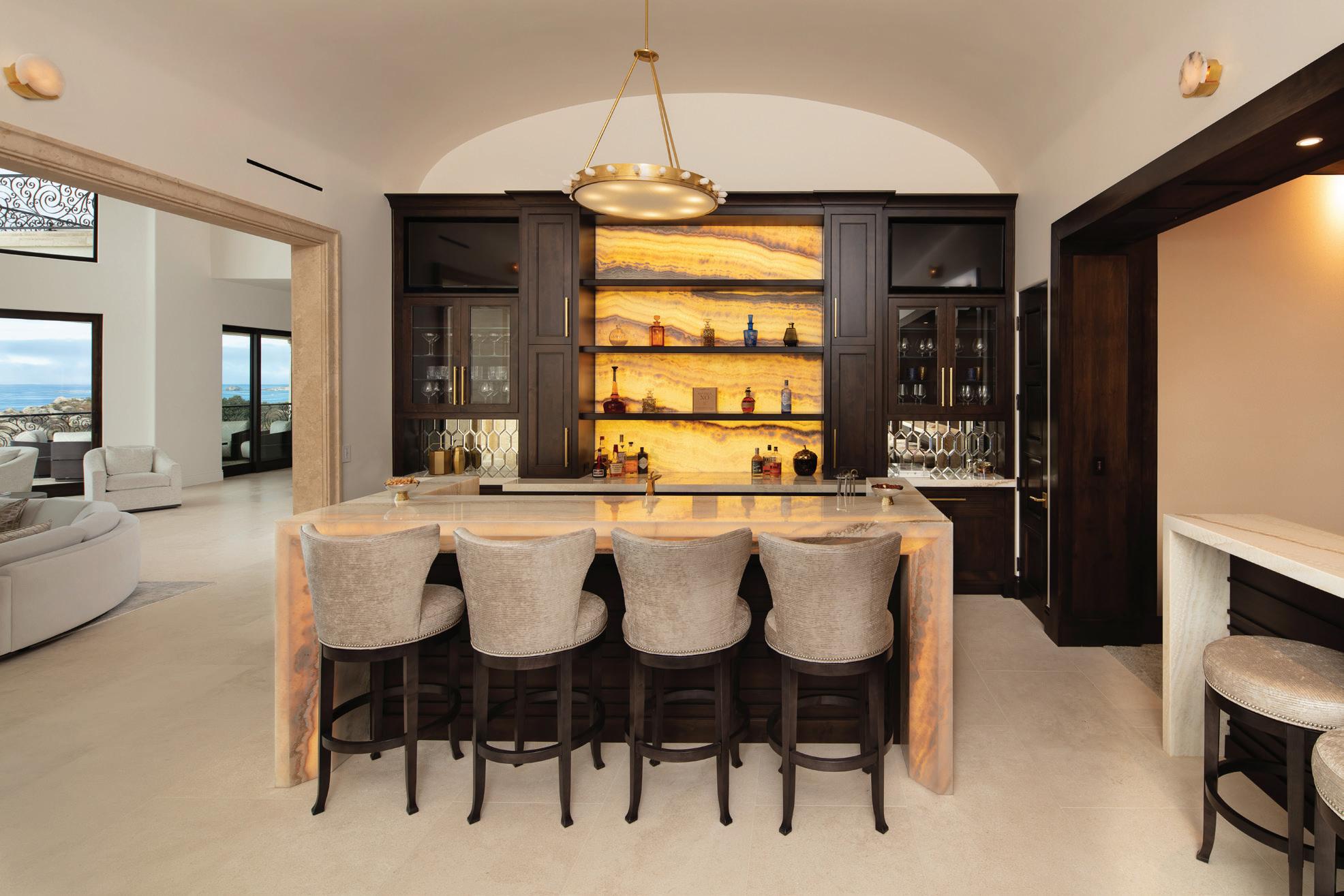

Gales and Wachob were attracted to steel frame construction and creating a Net Zero home, which led them to Andrew Goodwin Designs (AGD), who had experience with both. The local firm focuses on custom residential, boutique commercial, and civic projects. Andrew Goodwin, a Cal Poly alumni, and his team took the lead with the architectural design and supported Gales and Wachob in implementing their Mid-Century vision throughout their interior.


While they were mid-way through submitting permits, the price of steel skyrocketed forcing the team to reevaluate their design direction. Gales and Wachob knew it was important to spend time on the design and planning to ensure the rest of the project would run smoothly and went through several concepts with AGD before landing on the design they wanted to bring to life.
The duo was mindful of setting a realistic budget and adhering to it throughout the project. They brought FORM Design and Build, a local General Contractor that specializes in custom residential and boutique commercial projects, onto the team early. Founder Dustin Pires attended Cal Poly for Architecture before he decided General Contracting was more in line with what he >>



wanted to pursue. Gales and Wachob recognized the value in having a general contractor with a background in architecture—he had a working understanding of building costs and would honor the architectural vision, taking a solutionsminded approach. Despite working through the pandemic hurdles, with AGD and FORM’s guidance (and FORM’S project manager Jay Cervantes) not only did they stay on budget, the project was completed within two weeks of the estimated construction schedule.
AGD implemented a design principle often associated with Frank Lloyd Wright known as “compression and release” where you deliberately create small space (in this case, the entryway) through which guests pass before reaching a larger space. Wright believed this caused a temporary sense of tension, followed by a feeling of freedom. The properties of the land along with their goals of energy efficiency guided the home’s orientation as well as how to address the hurdles on the job site. One of the main priorities was capturing the views on the property, which meant window placement was critical. They positioned the home to work with natural lighting and help with climate patterns in their area. They decided not to add central air conditioning or heat and >>



instead used mini split units in different rooms and installed a wood-burning fireplace.

The home sits in an oak grove, which required a lot of grading and management of wilderness, so they pulled out all the stops to minimize the environmental impact. The exterior materials were limited since the site is in a high fire zone rated area, which also created strict guidelines for landscaping. The team needed to move large rocks from the site where the concrete pad was being poured, so Gales and Wachob chose to reuse them in the landscaping—now a favorite design feature.
With the project complete, Goodwin urges everyone to keep in mind that with contemporary design, the devil is in the details. Pires encourages clients to specify material finishes as early as possible, they not only impact the construction budget, but can change the way the team will approach building. Wachob recommends everyone do research, be realistic, and don’t have HGTV be your compass. Create a team where you feel comfortable asking questions and staying aware of where the project is every step of the way. Gales suggests having a third party review any part of the project that you aren’t sure about, and to keep in mind when implementing technology in a home, just because you can, doesn’t mean you should. Building a home that fits your design needs while creating a space that showcases your personal style is such a special process.
SLO LIFE









Total Homes Sold Average Asking Price Average Selling Price
Sales Price as a % of Asking Price Average # of Days on the Market
Total Homes Sold Average Asking Price Average Selling Price
Sales Price as a % of Asking Price Average # of Days on the Market
Total Homes Sold Average Asking Price Average Selling Price Sales Price as a % of Asking Price Average # of Days on the Market
country club
Total Homes Sold Average Asking Price Average Selling Price
Sales Price as a % of Asking Price Average # of Days on the Market
down town
Total Homes Sold Average Asking Price Average Selling Price Sales Price as a % of Asking Price Average # of Days on the Market
Total Homes Sold Average Asking Price Average Selling Price Sales Price as a % of Asking Price Average # of Days on the Market
2021 66 $772,676 $779,444 101.88% 15
2021 52 $936,803 $938,320 100.16% 30
2022 39 $994,258 $1,052,163 105.82% 8
+/-40.91% 28.68% 34.99% 3.94% -55.56%
2022 29 $1,274,229 $131,383 102.13% 9
+/-44.23% 36.02% -86.00% 1.97% -70.00%
2021 36 $1,169,433 $1,160,365 99.22% 28
2021 16 $1,366,500 $1,370,897 100.32% 16
2021 75 $948,280 $963,610 101.62% 36
2021 32 $950,719 $849,450 89.35% 33
2022 18 $1,197,555 $1,249,506 104.34% 14
+/-50.00% 2.40% 7.68% 5.12% -50.00%
2022 16 $1,884,813 $1,948,938 103.40% 19
+/0.00% 37.93% 42.17% 3.08% 18.75%
2022 41 $1,145,820 $1,184,800 103.40% 17
+/-45.33% 20.83% 22.95% 1.78% -52.78%
2022 20 $1,290,200 $1,314,531 101.89% 17
+/-37.50% 35.71% 54.75% 12.54% -48.48%
Total Homes Sold Average Asking Price Average Selling Price Sales Price as a % of Asking Price Average # of Days on the Market
2021 48 $1,075,688 $1,103,831 102.62% 21
2022 30 $1,084,830 $1,162,842 107.19% 17
SOURCE: San Luis Obispo Coastal Association of
+/-37.50% 0.85% 5.35% 4.57% -19.05%
(805) 335-8743

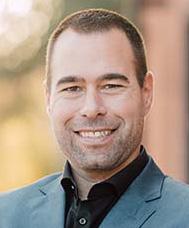





(805)



(805) 329-4095
602-0248

ermina.karim@rate.com












(805) 212-5204


Grover Beach
Osos Morro Bay Nipomo Oceano Pismo Beach
Luis

$1,550,768 $1,017,143 $697,037 $840,564 $1,017,422 $831,323 $643,654 $1,301,610 $605,189 $780,226 $936,209 $832,723 $1,026,038 $718,793 $1,042,823 $883,510
$1,129,618
$857,513 $2,285,160 $1,300,749 $1,823,375 $1,311,250 $765,360 $998,043 $1,123,210 $987,070 $777,475 $1,388,377 $735,802 $865,100 $1,281,321 $877,224 $1,281,447 $807,000 $1,295,850 $1,023,659



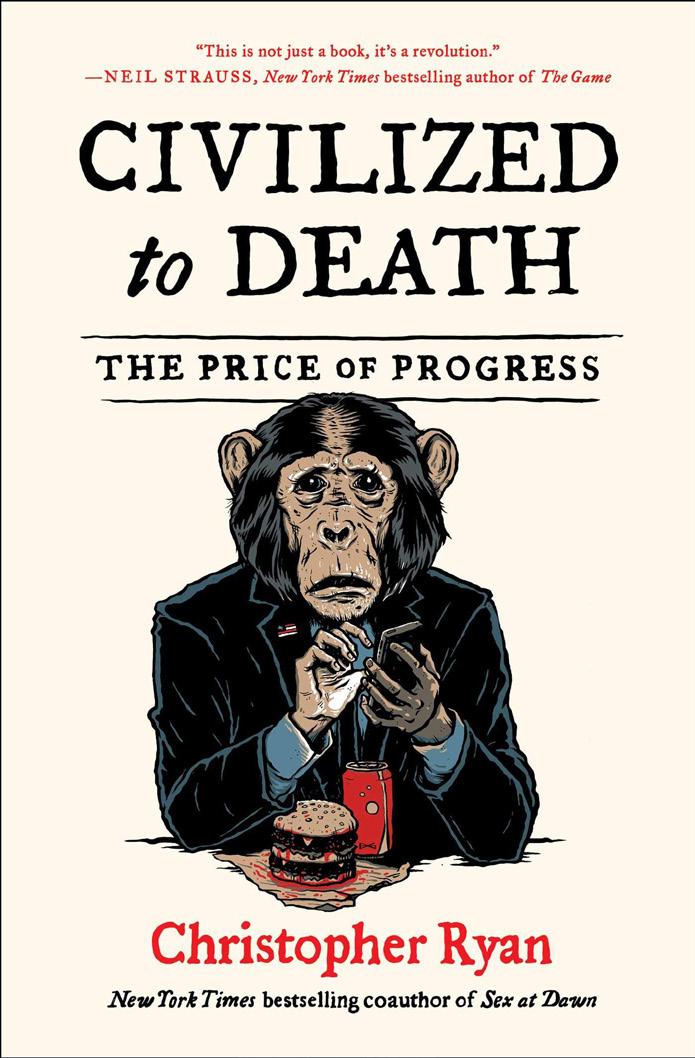
One thing is true with all of us here at SLO LIFE Magazine : We love to read. And a book we’ve been passing around the office lately has ignited quite a debate. The central question is are we actually better off than our caveman ancestors? It’s interesting to think about because conventional wisdom has always been a very simple three-word answer: Of course not.
But the book written by Christopher Ryan with the provocative title “Civilized to Death” is challenging the assumptions and doing so with an impressive combination of research and logic, which has caused us to rethink everything we thought we knew about where we came from as human beings—and where we are heading.
Ryan argues that it was the changeover from hunting and gathering to a reliance on agriculture where things started to go awry for mankind. Citing an impressive trove of many different archeological studies, he claims that these “skeletal remains confirm that neither famine nor obesity were common until the advent of civilization.” He explains further that we much more “nutritionally secure” when we
foraged hundreds of species of plants before we became reliant on just a few mass-grown varieties. This phenomenon alone caused a significant decline in public health, he asserts, but it’s also in how we obtain our calories that is problematic. No longer do we spend our days moving—hunting and gathering. Instead, most of us are sitting and staring.
The author lays much of the genesis for our misunderstanding of early humankind at the feet of the English philosopher Thomas Hobbes, who claimed in 1651 that prehistoric life was “. . . nasty, brutish, and short.”
Ryan calls him out as an apologist for the conquerors of native lands when he writes, “[Hobbes’] depiction of precivilized life justifies the socalled White Man’s Burden of bringing salvation to the primitives—even if you kill them in the process.”
Those ideas took root, Ryan explains, and have never really been fully vetted, instead, they have been adopted as the philosophical underpinnings leading the way from an egalitarian existence to one of concentrated wealth. It is that never-ending march toward a higher degree of specialization that has led to us becoming both overweight and overwhelmed. Ryan makes the case that we were better before farming, before capitalism, before we worked from nine to five. He summons data from the oft-cited 2013 Gallup poll indicating that 70% of Americans hate their jobs or have simply “checked out” of them, while only 30% are “engaged and enthusiastic.” The recent phenomenon known as “quiet quitting” appears to further strengthen his case. >>






From there, the news just gets worse, and the book was so depressing at times that taking a break became necessary. Comparing and contrasting the small, nomadic bands of prehistoric humans to modern day people, Ryan makes the case that the isolated existence many of us experience today is showing up in our mental health: “Not surprisingly, the use of antidepressants in the United States is up nearly 400 percent since 1990. In 2008, twenty-three percent of women between the ages of forty and fifty-nine were taking at least one of them. In 1985, sociologists asked Americans if they had close friends in whom they could confide. Ten percent said they had no one. By 2004, the number of people so isolated that they had no one they could confide in had risen to twenty-five percent.” Sadly, the list goes on.
Perhaps the most fascinating perspective shared by Ryan, was his indictment of modernity for turning his, and her, back on the use of magic mushrooms. “In nearly every society,” he asserts, “psychedelics have been considered among the greatest gifts bestowed on humanity by the gods.” He goes on to sing their praises for their ability to foster a direct relationship with the divine. Then, he shares the current research on the surprising effectiveness psychedelics have in alleviating addiction to drugs and alcohol (psychedelics themselves have been found to be non-habit forming), as well to alleviate the anxiety of terminally ill cancer patients.
After an unceasing barrage of bad news, Ryan finally relents just a bit in his final chapter when he says, “Still, despite the sheer volume of grumpiness you’ve read so far, I’m not without hope for our species—which is not to say I’m optimistic.” He then takes one more step toward the dark side as he itemizes all the possible ways things can come to a cataclysmic end, everything from climate change to asteroids, before prescribing what sounds like a relatively simple fix to all that ails us—the same sort of stuff we hear all the time from the health gurus, happiness surveys, and lifestyle bloggers: live simpler, reduce stress,

is in season, sit in the sun, spend more time with the





least according to Ryan, swallow a magic mushroom every once







Chef Frank Barajas gets curious at Pequín Coastal Cocina in Pismo Beach
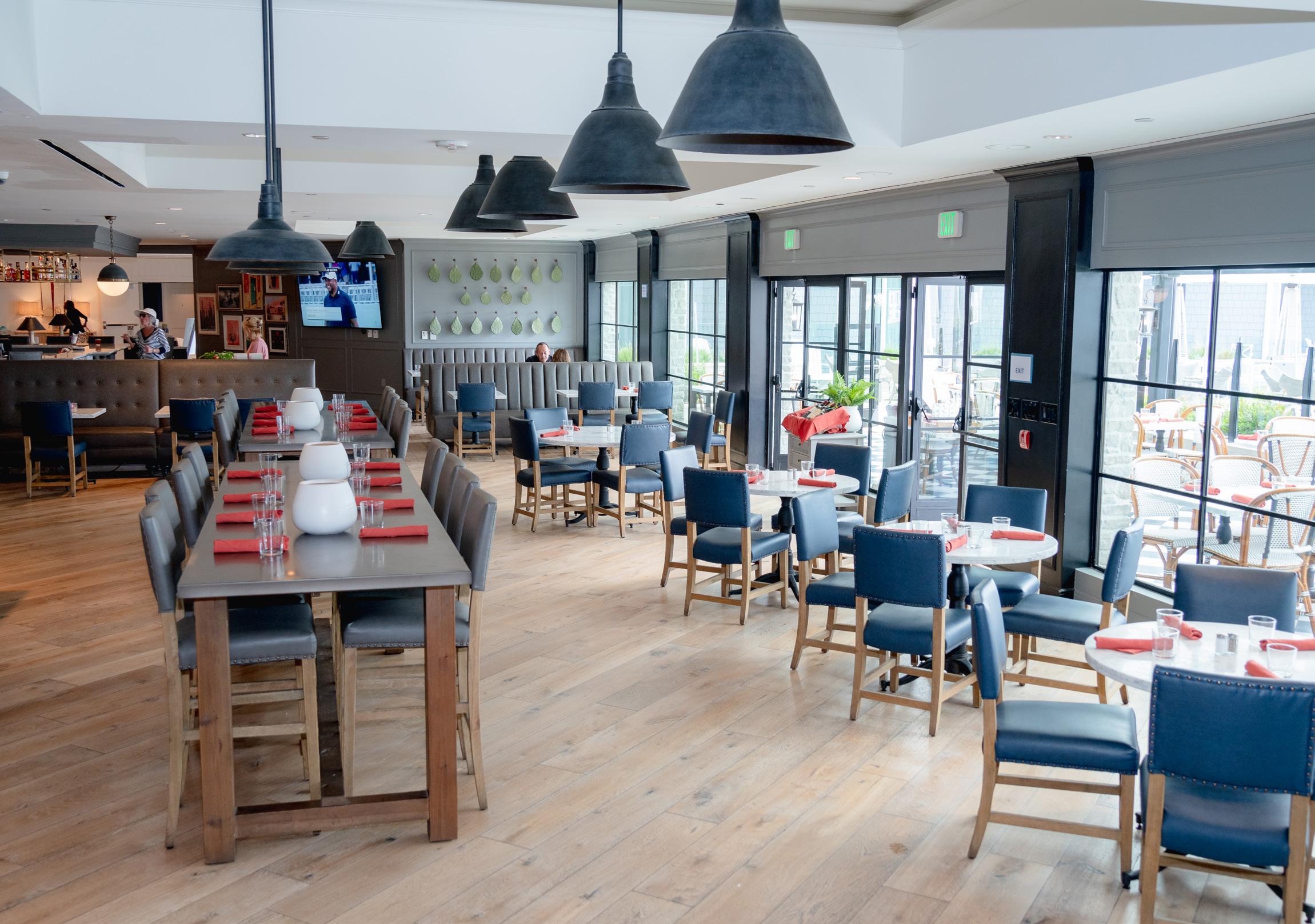 BY JAIME LEWIS PHOTOGRAPHY BY JESS LERNER
BY JAIME LEWIS PHOTOGRAPHY BY JESS LERNER
Because I’m a local, I tend not to think of hotel restaurants when considering my dining options. But it stands to reason that, if tourism constitutes the largest industry sector of SLO County’s economy, our hotel restaurants do excellent work. Thanks to a recent dinner at Pequín Coastal Cocina in the Vespera Resort in Pismo Beach, I can confirm.
Vespera sits right on the Pismo Beach Boardwalk—a landmark I’d never walked before, despite having grown up in South County. (When I lived in San Francisco, I never went to Fisherman’s Wharf, nor to the Statue of Liberty when I lived in New York. So goes real life in a tourist destination.) When my husband and I arrive at Pequín Coastal Cocina, our host seats us on the patio overlooking the poolside bar and, beyond that, the shoreline. A singer-songwriter croons quiet tunes as the sun sets. The silhouettes of kids in swimsuits and adults holding cocktails paints a relaxed, contented picture. If I squint, I can almost see us on vacation right alongside them. >>
The hotel was built in 2019 as part of the Autograph Collection by Marriott, and the restaurant’s crisp tailoring and sprawling kitchen and bar attest to its upscale pedigree. Black and white tile floors, Parisian bistro chairs, and wall-to-wall windows set a sophisticated scene. I’d heard Pequín Coastal Cocina described as a Mexican restaurant, but none of the dishes fit squarely in that category of cuisine.
“My inspiration comes from all over,” says Executive Chef Frank Barajas, who joins us at the table. “That can mean influences from the French Riviera, the Mediterranean, or Baja.” Ultimately, he says, his menu at Pequín exemplifies “coastal cuisine.”

That sounds delightful, but as we start tasting Barajas’ dishes, I can’t help but think his categorization of “coastal cuisine” is wildly insufficient. For instance, the Brussels sprouts on the menu are notably different from those routinely offered at other farm-to-table restaurants; served with whipped queso fresco, bacon, macha shoyu, and a tart hibiscus-tequila glaze, they lift beyond a ho-hum veg starter to a finely-tuned standalone dish. And while the watermelon salad takes cues from those that came before, it leans Latin with tomatillos and marinated queso fresco standing in for feta. The skin on the pollo asado with chayote squash and smoky morita mole is insanely, impossibly crispy. And the swordfish al pastor tacos with crispy cheese, gooseberry salsa boracha, pineapple and housemade savory pop rocks? Positively inspired. Each bite tingles and sparkles, just like you’d expect.

Raised in a Mexican-American family in San Diego, Barajas started as a prep cook and worked his way up to attend the Art Institute of San Diego for its culinary program—a move that pays dividends in the style and creativity his dishes show today. That experience propelled him into the glittering kitchens of Las Vegas, including a run as executive chef at The Villas at The Mirage Hotel.

“I saw some crazy things there,” he says. “They created a fusion with where I’d been, and then I brought that fusion here.”
Throughout his career, Barajas says, he has used his vacation time to stage—or take an unpaid internship— with coffee roasters, molecular gastronomists, and others. His house, he says, is packed floor-to-ceiling with cookbooks. He has sought after vendors like Masienda in Los Angeles, which partners with farmers to save dying varieties of heirloom corn for masa. And he has tumbled down internet rabbit holes to learn about gooseberries (which are related to tomatillos), baking soda (which accounts for that relentlessly crispy chicken skin), and toasted avocado leaves (which add a licorice root flavor to bayo beans). In essence, the menu at Pequín Coastal Cocina reads like an inventory of Barajas’s infinite curiosities. >>

“In my kitchen, I say ‘We conceive with love and execute with science,’” Baraja says, professorially. As he returns to the kitchen, a server swoops in to place a cloche on our table. When the lid lifts, a cloud emerges to reveal a small platter of churros and three dipping sauces: guava, chocolate rose, and dulce de leche. We ooh and ahh, and turn to thank Chef Barajas in the kitchen, but he has already directed his full attention to something new. With any luck, whatever he discovers will wind up on next month’s menu.

Pequín Coastal Cocina offers a generous cocktail menu, complete with signature sips made from top shelf spirits, as well as alcohol-free concoctions. For my visit, I definitely had to try the SLO Life cocktail: Goslings dark rum, Campari, lime juice, Demerara syrup, and pineapple juice with a lime wedge. Highly recommend.
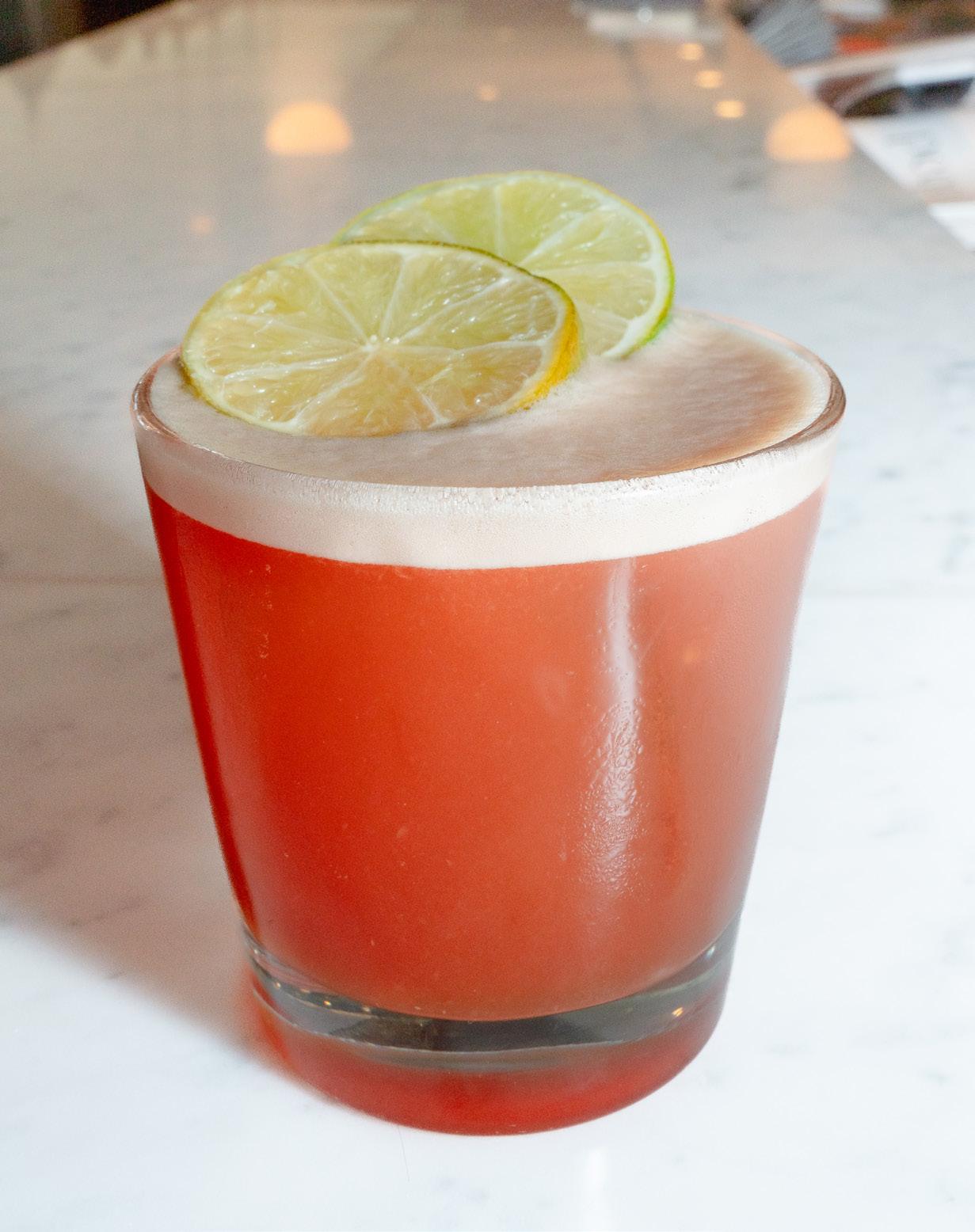






very local knows summer starts around the end of July and moves through August, September, and ends just a few days shy of Halloween, leaving all those Cal Poly students huddled in the doorways of downtown bars shivering in their costumes that would have worked on Wednesday, but now seem woefully under-fabricked come Friday night. It’s in this vein I hope to spread the word that you can still get refreshing beverages as we transition to whatever we consider to be seasons around these parts.
Weeks ago, my wife and I grabbed a beer on the sun dappled back patio of Central Coast Brewing’s Higuera Street location. We walked through the expansive facility nodding “hello” to George Peterson, the owner, on our way to an Adirondack chair and after about half a pint, he came over to join us and chat for a bit. Excitedly jumping up after a few minutes, he comes back with a custom tasting paddle full of colorful, frozen concoctions. Apparently, Peterson got a new toy for the summer.
.
. . I liked it. These particular flavors were derived from the brewery’s Pastry Party, an imperial stout with lactose, vanilla, and toasted coconut kicked up with a swirl of Ghiradeli chocolate syrup. It was delicious. Going on the other side of the palate was a fruity, red concoction that was more reminiscent of a slushie with a trademarked name. It was their imperial kettle sour named Raspberry Sunrise. The tartness was tamed with a blueberry purée and again run through this machine to make it cold and creamy. It should be noted that these slushies have no added ice, but merely are churned over a super-cooled metal screw that results in the natural water of the beer becoming frozen. Even as it melts, the slushie just turns back into beer, albeit with a frozen creamy head that turns even the most hardened beer nerd into a little buzzed child.
I return to CCB with Todd Meaney, the intrepid photographer, and we sip through Peterson’s “new and improved” recipes while we talk shop about a major project happening at their newest location. The original Central Coast Brewing on Monterey Street is closing it’s doors after twenty-five years, and although I’ll be very sad to see it go I can hold on to the memories and
I guess now we’re drinking beer slushies. My nose immediately started curving upward and I resisted my pinkie from sticking out with all my energy, but despite all my snobbery this frozen beer was raised to my lips and >>

walk across the street, up about a block, and be at their newest location. No longer beholden to the floor plans of a computer repair shop of the past, CCB’s latest greatest plan is a big one.
The Hub SLO has taken over the former site of Daylight Home and Garden on 1701 Monterey Street. You may recognize it from the bright orange metal fence surrounding the property. Well, no longer, as they organized a team of employees, volunteers, and fans of beer to break in the new spot with a fence painting party. Reminiscent of Tom Sawyer and a pail of whitewash, Peterson has managed to dupe all these people into doing his work for him. Joking aside, his seemingly endless drive and ambition has an appeal. He’ll be the first one to get dirty and the last one to leave. Todd and I went to visit him and grab a beer at the old location once and ended up shoveling cubic tons of gravel from the driveway to the patio for hours just because he’s that kind of guy.
It’s this sense of community that is going to usher in the new era of CCB as a local fixture. You see, it’s not just a new location, but a new destination. The Hub SLO is the tongue-in-cheek name for what might well become the next happening joint. An avid cyclist and car guy, he just


couldn’t pass up dreams of renovating this former car lot and service center. With handshakes and signatures there won’t just be beers, but a whole litany of SLO-centric businesses all housed in the same 20,000-square-foot facility. The short list includes additional locations for Art’s Cyclery, Whalebird Kombucha, SLO Cider, Carlson Wines, Joe Bella Coffee Roasters, SLO Axe Throwing, Broad Street Barber, and they’re even teaming up with Krobar Distillery to offer cocktail options paired with Yes! Cocktail mixers. Throw in the addition of eight billiards tables, a smattering of televisions playing sports, food trucks (including their own What the Truck), even a pickleball court, and you may never leave.
If there’s anyone that can bring together a small community to help build an even smaller community within freshly painted fencing, it’s going to be Peterson at Central Coast Brewing. I’m personally excited to have this extension of my living room, but with more axe throwing. It sounds like The Hub SLO is truly a bespoke project, so join me in raising a pint glass, coffee mug, wine tumbler, whiskey snifter, shears, handlebar, and a solid hickory handle to the new kid on the block.
Cheers! SLO LIFE








I ’m a bit embarrassed to admit it: I’ve never been there. And, by “there,” I mean Solvang. But, with so much to do and see right here in SLO County, I’ve never really felt the need. I mean, I’ve barely scratched the surface here in my attempt to fully “Live the SLO Life.” What a treat it was, though, to spend a night at the rambling two-acre property known as Hotel Ynez. Nestled between the equal parts cute and quixotic downtown and the first of Santa Ynez’s many vineyards, the little eighteen-room luxury roadside inn will not soon be forgotten—and neither will the Danish waffles I found a hop, skip, and a jump down the road.
Solvang is sometimes referred to as the “Danish Capital of America.” I had no idea all this cool Danish-ness could be found just to the south. Apparently, the city—if it can be called a city, I’d say it’s more a quaint little village, like something out of “The Sound of Music” or Disneyland—was founded back in 1804 when the area was controlled by Spain. That’s when a tiny hamlet first formed near the mission called Santa Inés. A few years later, 1911 to be precise, a small group of Danish-Americans pooled their resources to purchase the 9,000acre plot to have a place for themselves and their Midwestern-based families to go during the harsh winters. Appropriately, they named the place “sunny field,” the literal translation of Solvang. I wonder how you say “snowbird” in Danish?

In a previous life, the property was known as the Meadowlark Inn, a classic, low-flung, side-of-the-road, California motel. After extensive renovation, the place now fits squarely within the boutique hotel category, as it caters to a high-end wine-sipping clientele and trendsetting hipsters like, um, me. For all the thoughtful amenities, it was the basics that shone the brightest: stargazing beneath the bough of twisted and gnarled oak limbs while indulging in a chilled local Chardonnay; rising early to warm up with a steamy java filled mug by the firepit; borrowing one of the many hotel bicycles for a ride along the paved Bob Jones-like path downtown for breakfast; and sampling every edible morsel labeled “Danish” on Copenhagen Drive.



From San Luis Obispo, head an hour south on 101 and exit at Highway 246, passing through downtown Solvang on your way there. You’ll see the sign for Hotel Ynez on the right-hand side of the road at 2644 Mission Drive.
LIFE


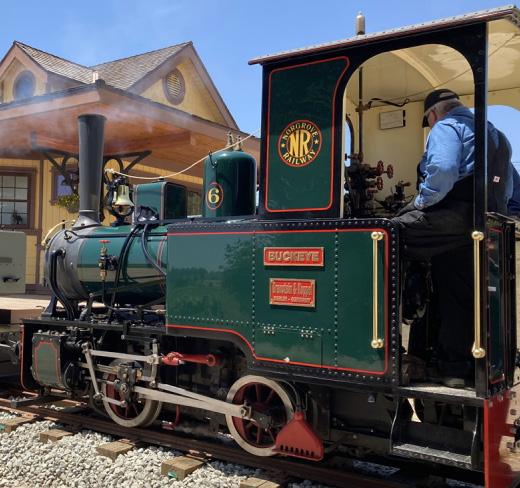
Attracting avid and casual rail fans, as well as curious folks from across the Western United States, this broad-based festival focuses on railroading of many types with an eye towards the beauty of the Central Coast. Attend the twelfth annual event and expand your interest in all things rail.
October 7-9 // ccrrf.com

A new museum exhibit at the Spooner Ranch House in Montaña de Oro State Park offers tales of women who made California home in the years just before and after statehood. The traveling exhibition, open seven days a week, features portraits of female pioneers and first-person accounts of the hardships, joys, and lives of those who traveled by land or sea to settle here during the mid-nineteenth century.
October 7-9, 15-16 // slocountyarts.org

With fashions from First Class Seconds and Closet 915, the eighth annual fashion event, this year held at Dana Adobe Cultural Center, benefits domestic violence and safe dating awareness. Sparkling wine, chocolate truffles, and designer cookies will be served alongside the runway, and a guest speaker, self-defense demonstrations, prizes, a silent auction and more surprises await.
October 8 // fashionsforapurpose.org
OperaSLO’s spectacular full production of this classic Rodgers and Hammerstein Broadway hit comes to the Performing Arts Center with an internationally acclaimed leading cast. Directed by Zach Johnson, who directed the 2019 production of “South Pacific,” and accompanied by the full OperaSLO Grand Orchestra conducted by Brian Asher Alhadeff, the show promises expansive sets and costumes, ballet, and chorus.
October 15-16 // operaslo.org

The nine-time Grammy-Award winning artist, who has twice been inducted into the Rock ’n’ Roll Hall of Fame (first as a Beatle and then as a solo artist), comes to Paso Robles along with Steve Lukather, Colin Hay, Warren Ham, Gregg Bissonette, Hamish Stuart, and Edgar Winter. Get ready for a live evening of legendary songs— all imbued with joy, reflection, and wisdom.
October
vinaroblesamphitheatre.com

Cal Poly Arts presents one of the most influential voices in the comedy landscape. In 2018, she made international headlines as the much buzzed-about headliner of the 2018 White House Correspondents Dinner. Her other TV credits include “The Daily Show with Trevor Noah” and “Late Night with Seth Meyers.”
October 21 // calpolyarts.org


This celebration of the Dallidet Women, brought to you by the History Center, honors Señora Asención Concepción Salazar Dallidet, widely known as Mama Dallidet, who helped instill—especially in her daughters—a sense of pride in their Mexican heritage. Enjoy a lunch buffet, live Mariachi music, an art show, raffle, photo booth, and a fresh flower market while strolling the Dallidet Adobe gardens. October 22 // historycenterslo.org

The Mid-State Fair Market at the Paso Robles Event Center features local crafters and artisans from throughout San Luis Obispo County selling handmade and unique items. Find jewelry, apparel, fashion accessories, home décor, health and beauty products, art, antiques, handmade eats, used items and more. October 28-30 // midstatefair.com

Specializing in
Relationship Conflicts - Parenting & Self-Esteem
Separation and Divorce - Personal Life Planning



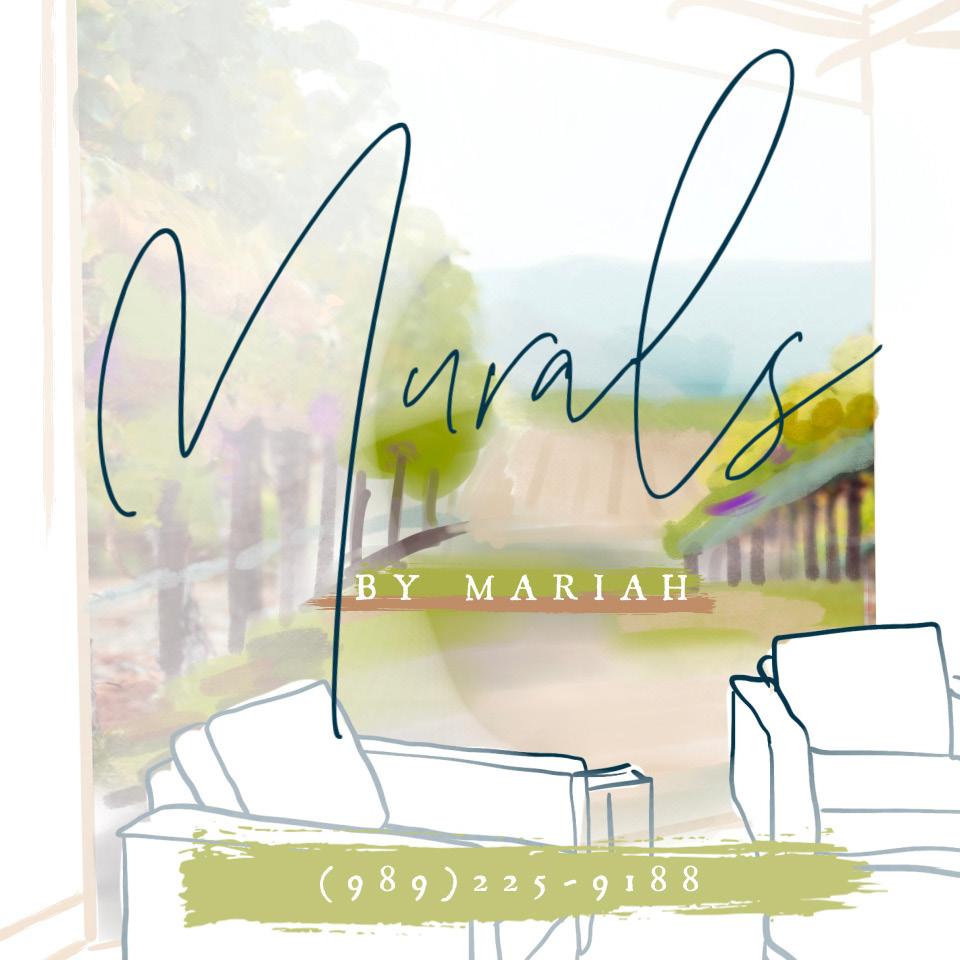

Grief and Loss - Career Uncertainty
The SLO Botanical Garden invites all seniors 55+ to go dancing in the garden to the old-school jazz, blues, and New Orleans sounds of Voodoo DooDads, a local band featuring Valerie Johnson, Al B Blue, Dr. Bob Brennan, Brian Hanratty, and John Stinson. Tickets are limited to fifty people—and they sell out fast.

Period costumes are encouraged as Michael Nowak and Orchestra Novo proudly present the 1928 silent film “Show People” with live orchestra music by Carl Davis at the Cuesta Performing Arts Center. Directed by King Vidor and starring Marion Davies (in what many consider her best role) and William Haines, the comedy is a lighthearted look at Hollywood at the end of the silent film era.

you feeling
can help.

Set in the Berkeley hills after a major fire, Jane Anderson’s 2007 play introduces us to two couples who are made to confront their huge dissimilarities. It’s offered as one of SLO REP’s staged reading series “Ubu’s Other Shoe,” which pays homage to all artists who strive to explore the fringes of their art.
November 4-5 // slorep.org
Proclaimed “a phenomenon” by the Los Angeles Times and “one of the best pianists of his generation” by the Philadelphia Inquirer, Goodyear is an accomplished concert pianist, improviser, and composer. This concert, presented by Festival Mozaic, features the California premiere of his composition “Acabris! Acabras! Acabram!” and selections from Bologne, Bach, and Beethoven.
November
// festivalmozaic.org
SLO Symphony with conductor Andrew Sewell remembers the music that brought jazz to the concert hall with George Gershwin’s “Piano Concerto in F” featuring pianist Ilya Yakushev, who also performs Tsfasman’s “Jazz Suite for Piano and Orchestra” in its West Coast premiere. Other selections include Valerie Coleman’s “Umoja,” and Tchaikovsky’s homage to Italy, “Capriccio Italien.”

November 12 // slosymphony.org

An interactive holiday destination “where the holidays glow and the whiskey flows” opens in downtown SLO with a portion of proceeds dedicated to Dream Makers SLO. The historic Carrisa Building is the setting for this totally immersive experience featuring four zones decorated floor to ceiling in nostalgic holiday décor: a cozy sweater nook, a “holly jolly hall,” a Rod & Hammer ski chalet, and a game room.
November 16-December 23 // thecarrisa.com
The award-winning Scottish-American polymath known for playing God, the Devil, Hitler, a lawyer, the Pope, a teleporting superhero, Hamlet, all the parts in Macbeth, and the EmCee in “Cabaret” on Broadway brings his new cabaret show to SLO for an evening of story and song. Celebrate his puckish, eclectic spirit and joie de vivre with a joyful and mischievous exploration of that most communal of pastimes: aging.


November 13 // calpolyarts.org

San Luis Obispo Museum of Art has gathered a collection of works reflecting the unique and intimate experiences of artists exploring how we achieve balance in our intertwined lives of domesticity and productivity. The works reflect on the complex entanglements of home life, working life, and the often unseen labors between. Featured artists include Phoebe Boswell, Geoffrey Chadsey, Judy Chicago, Mary Kelly, and Brandy Eve Allen.
September 16-18

Since 1922, your family has turned to us for inspiration and expertise for their beautiful homes. Today, every generation turns to us for their real estate needs – no matter the market, no matter their stage in life. Celebrate 100 years with us - we're here for you.
Contact
Homes and Gardens Real Estate
today!
